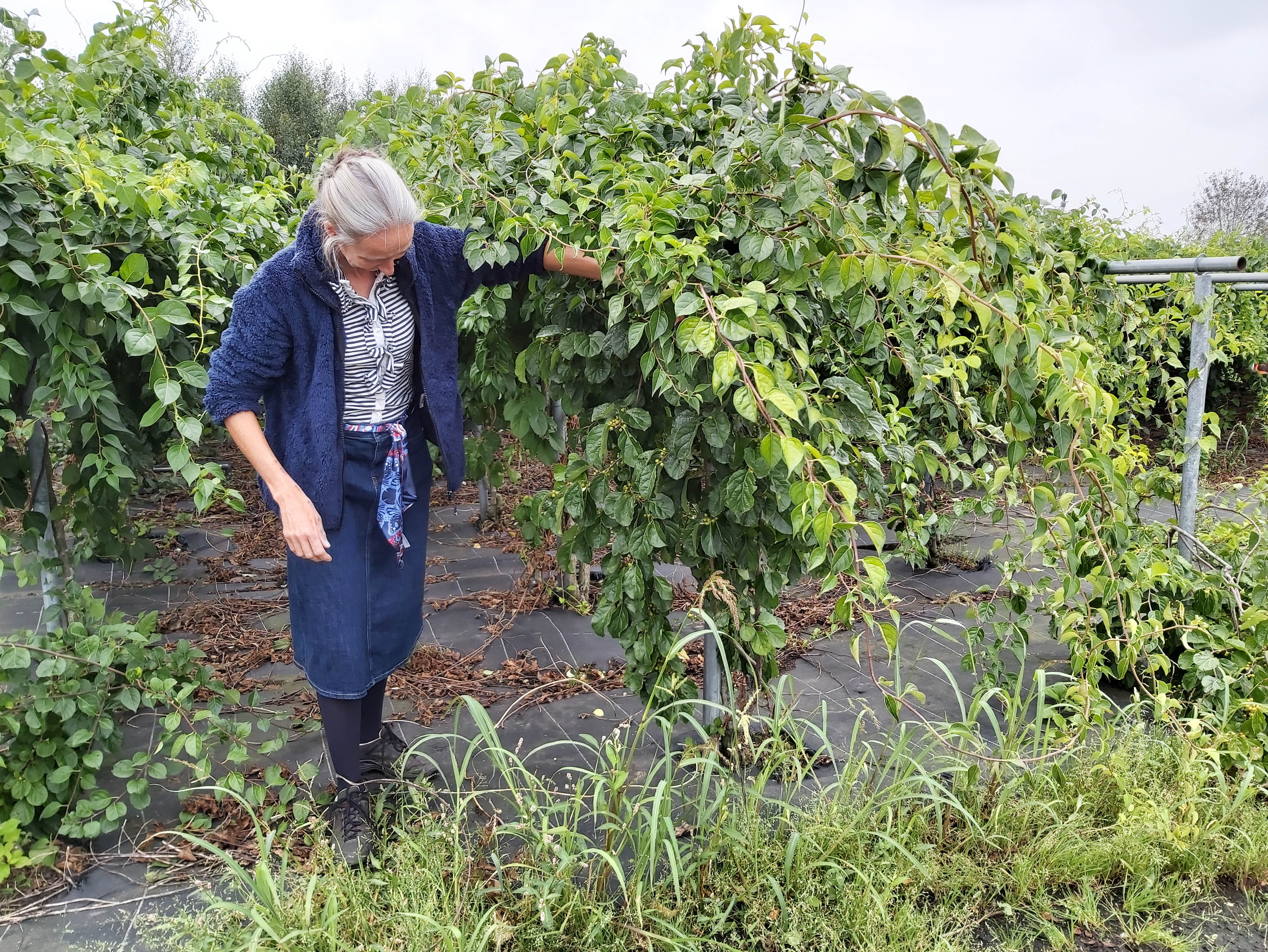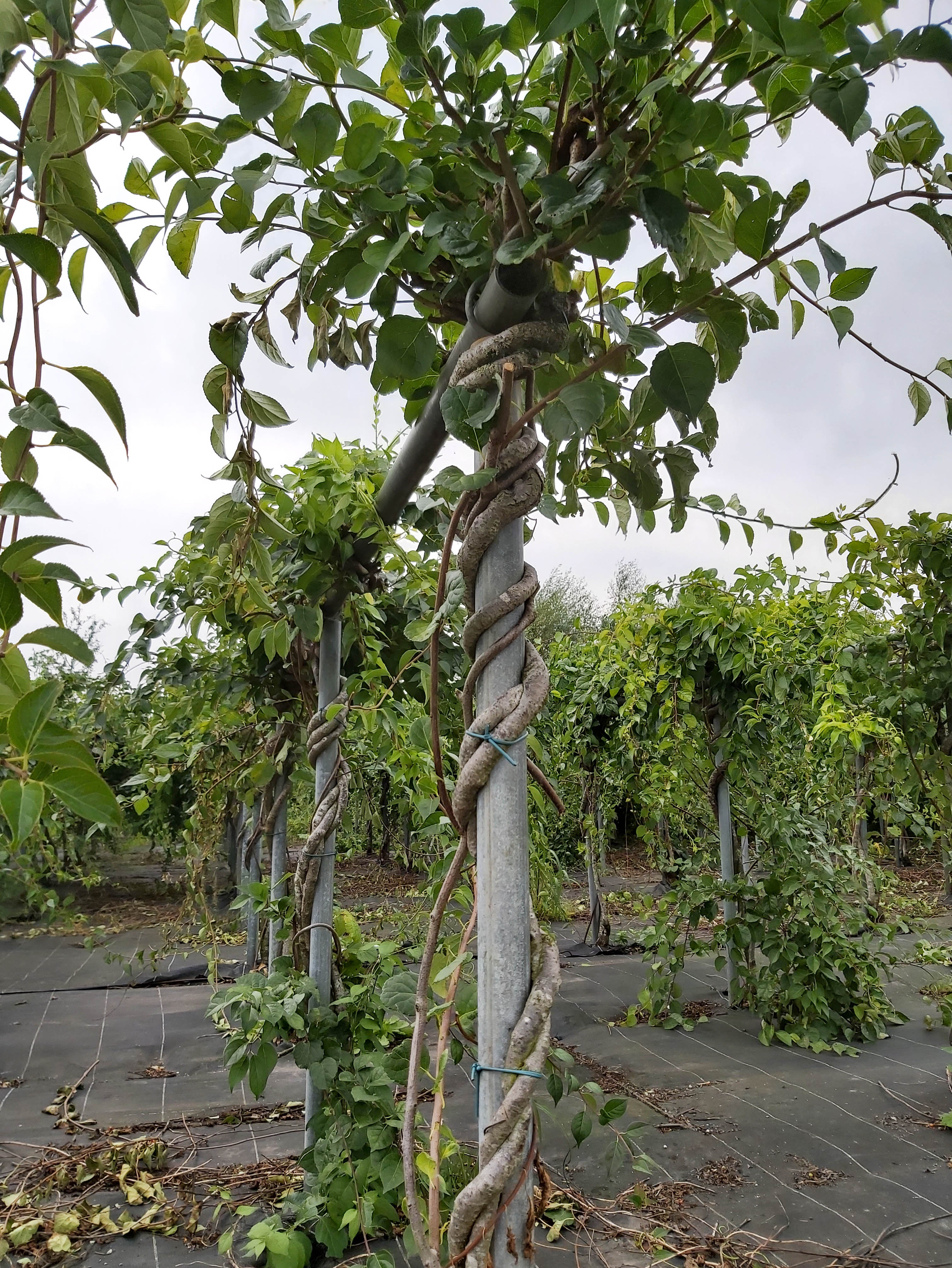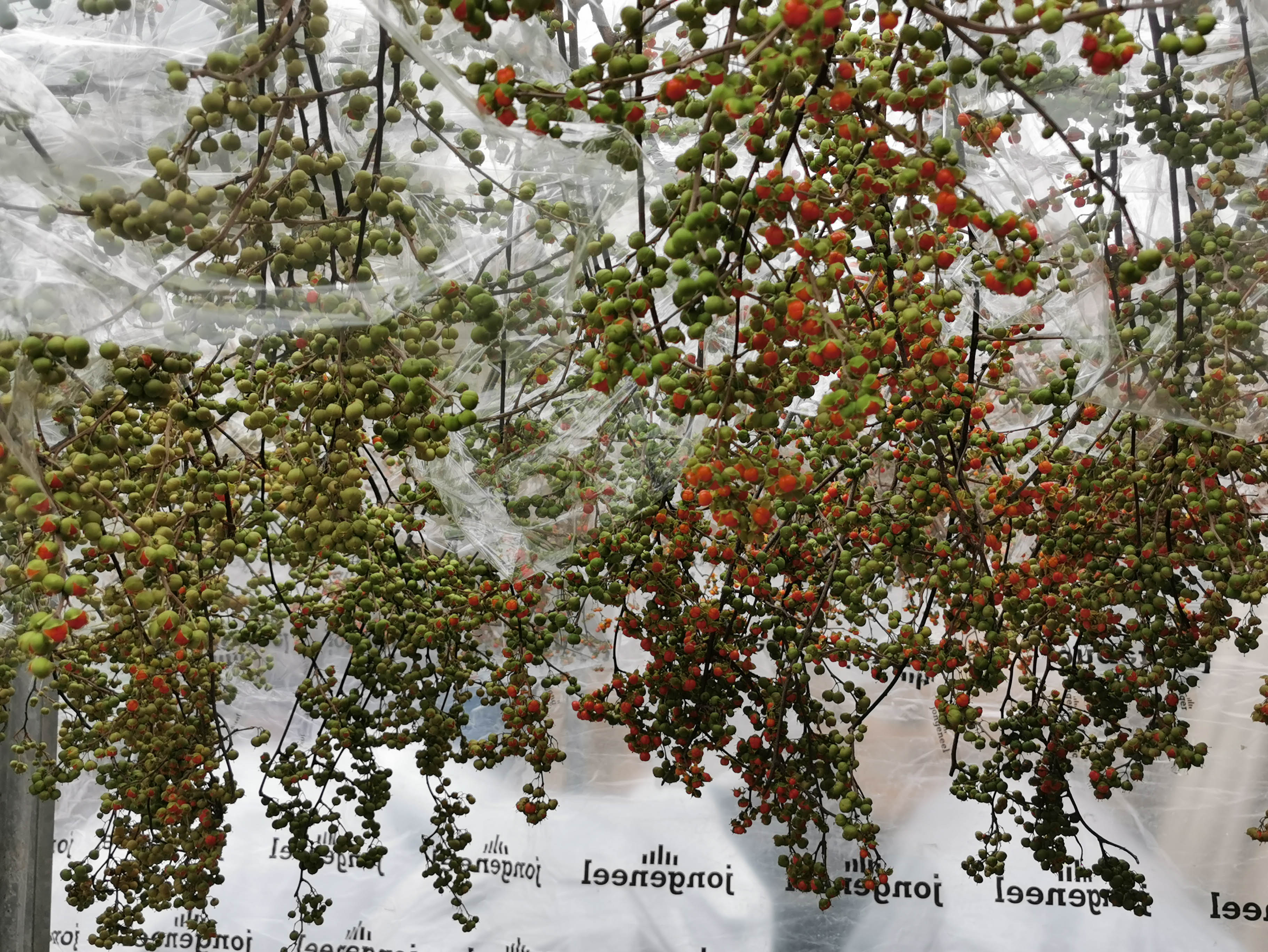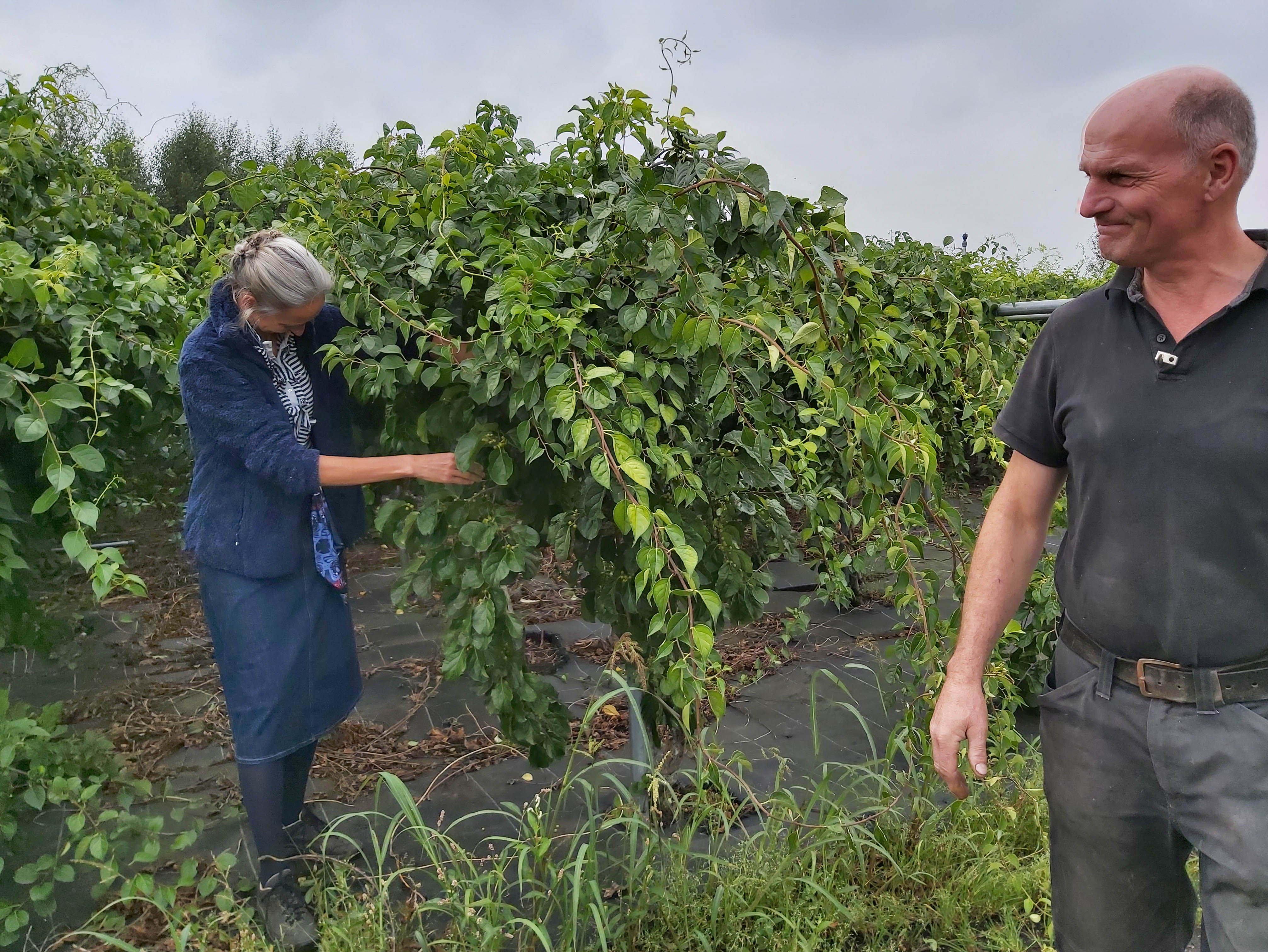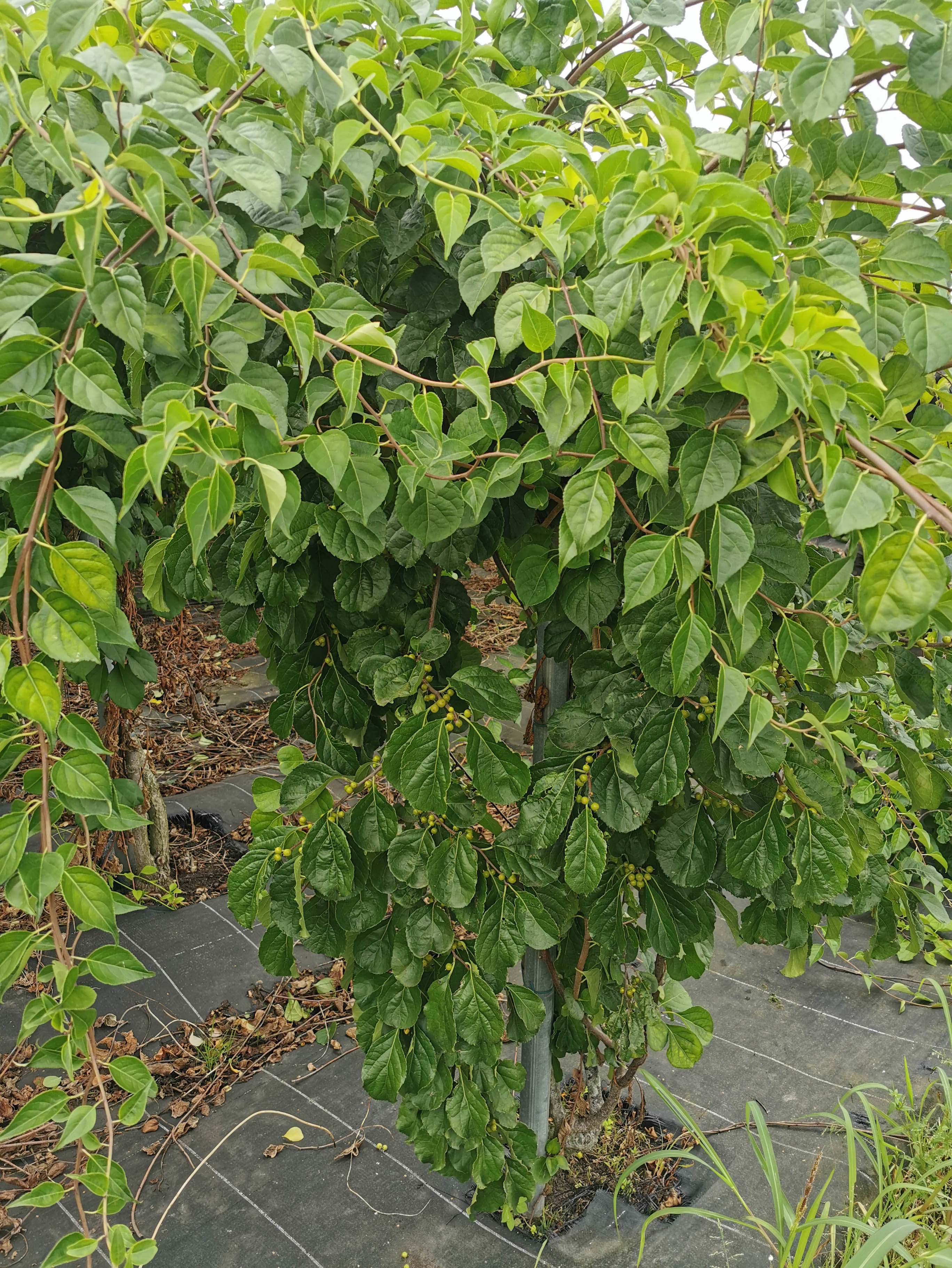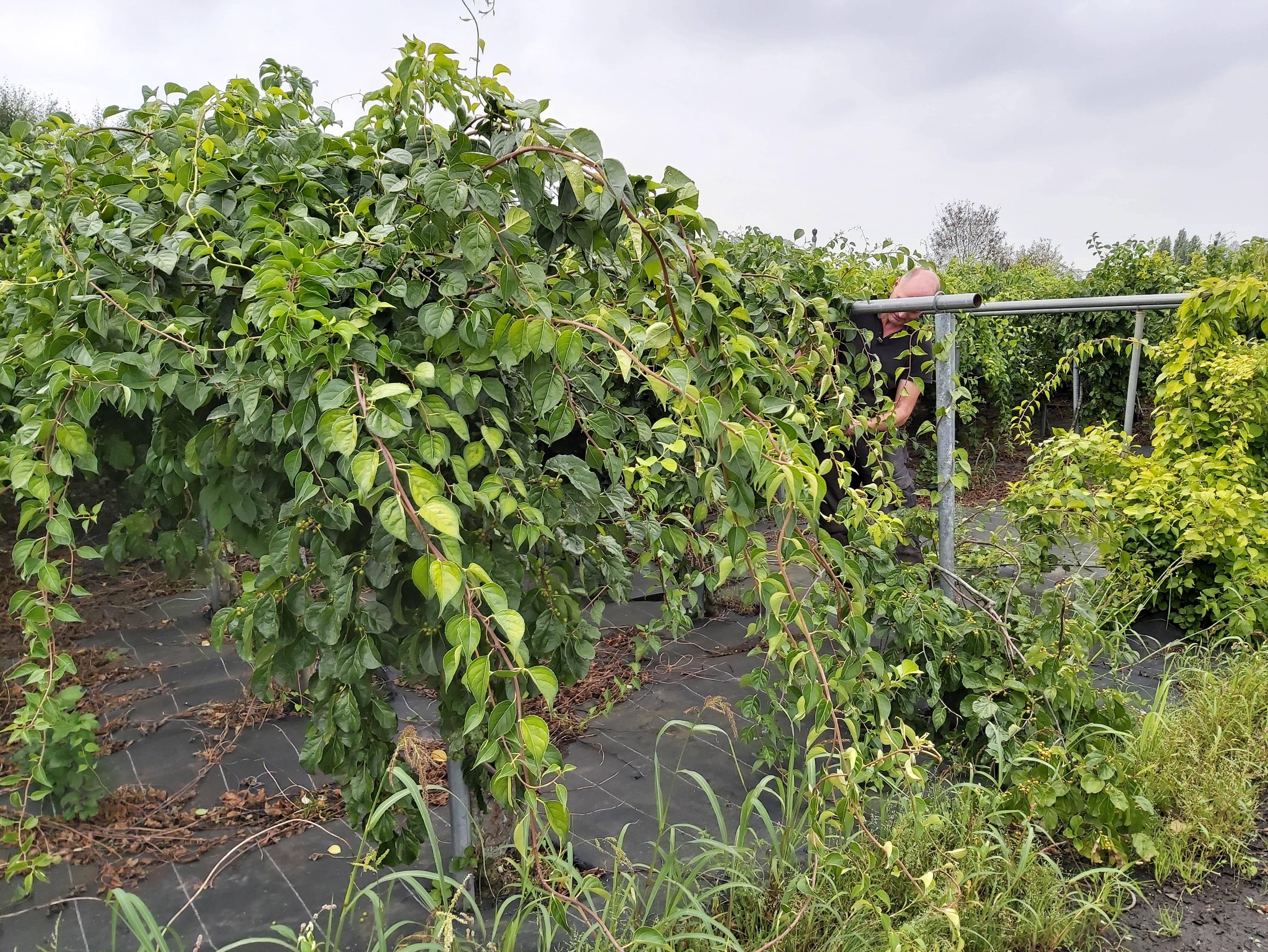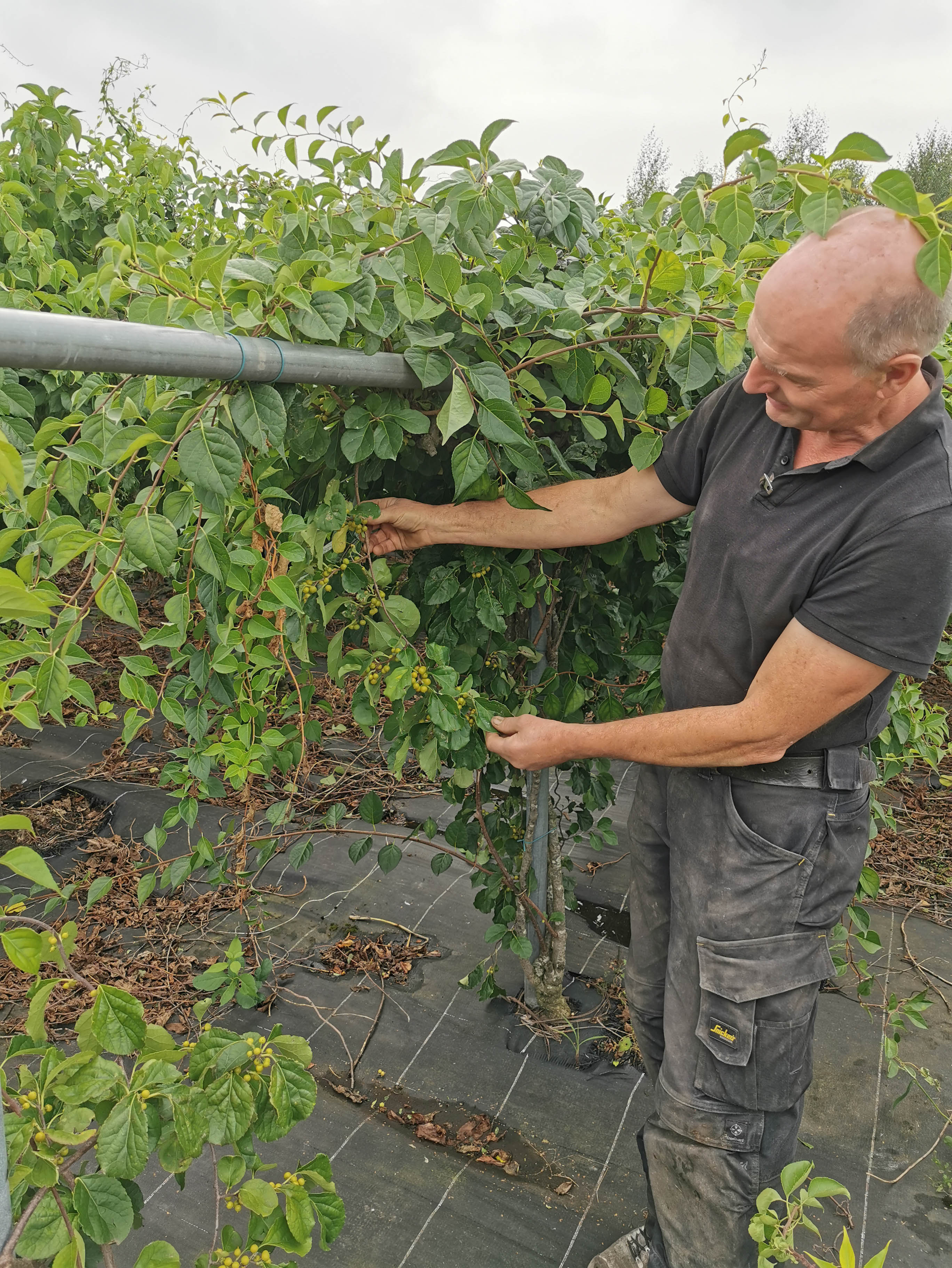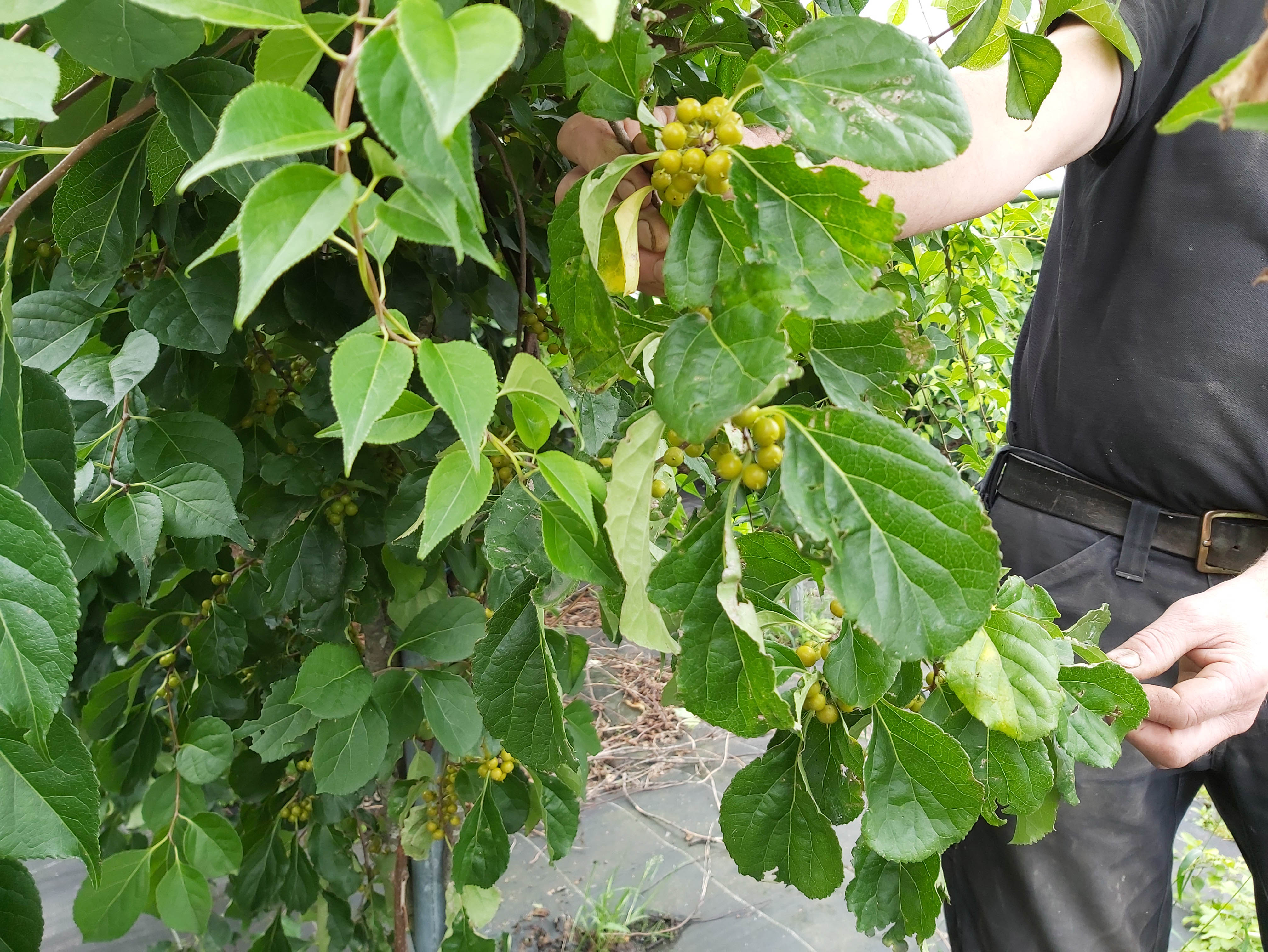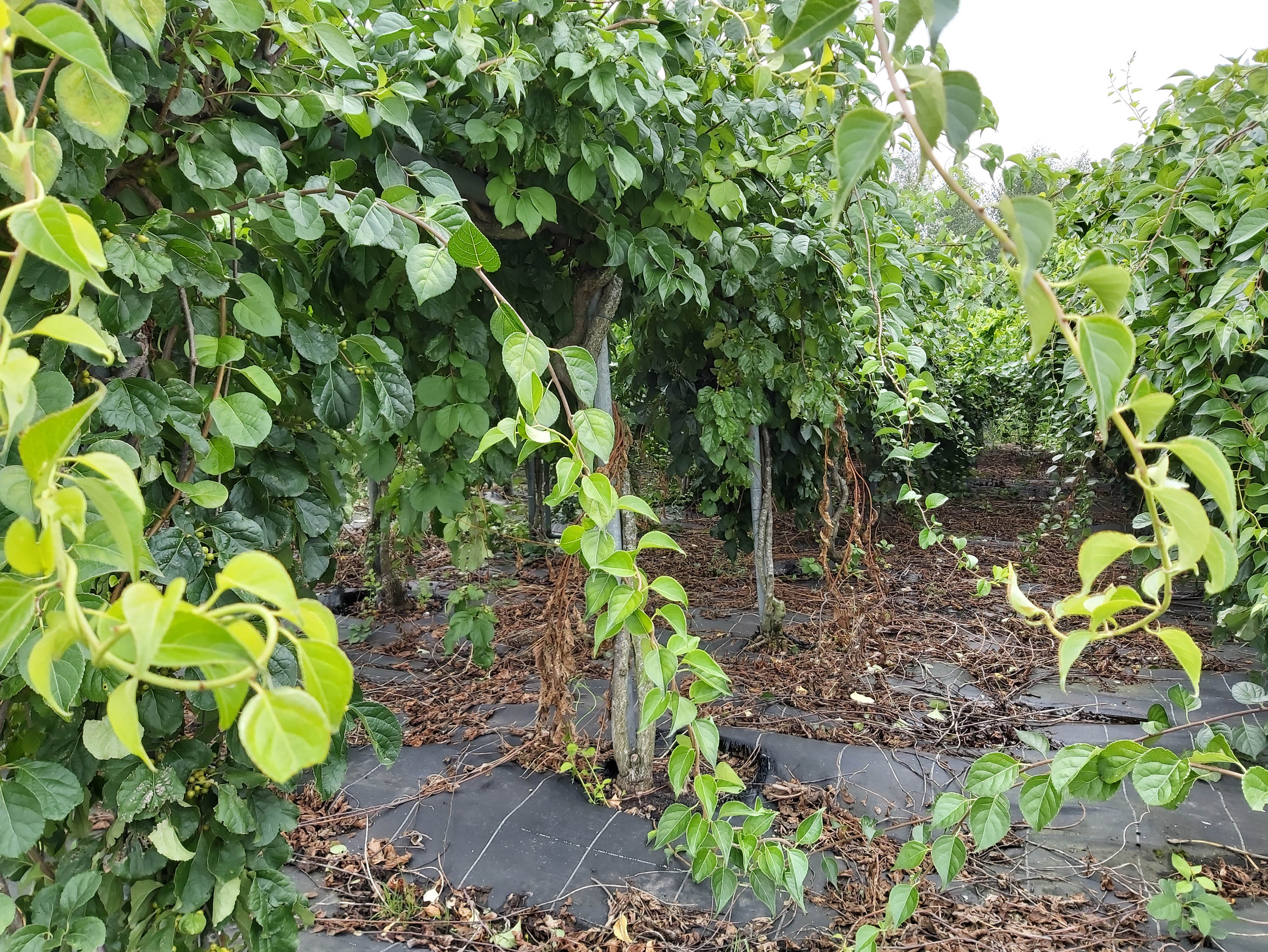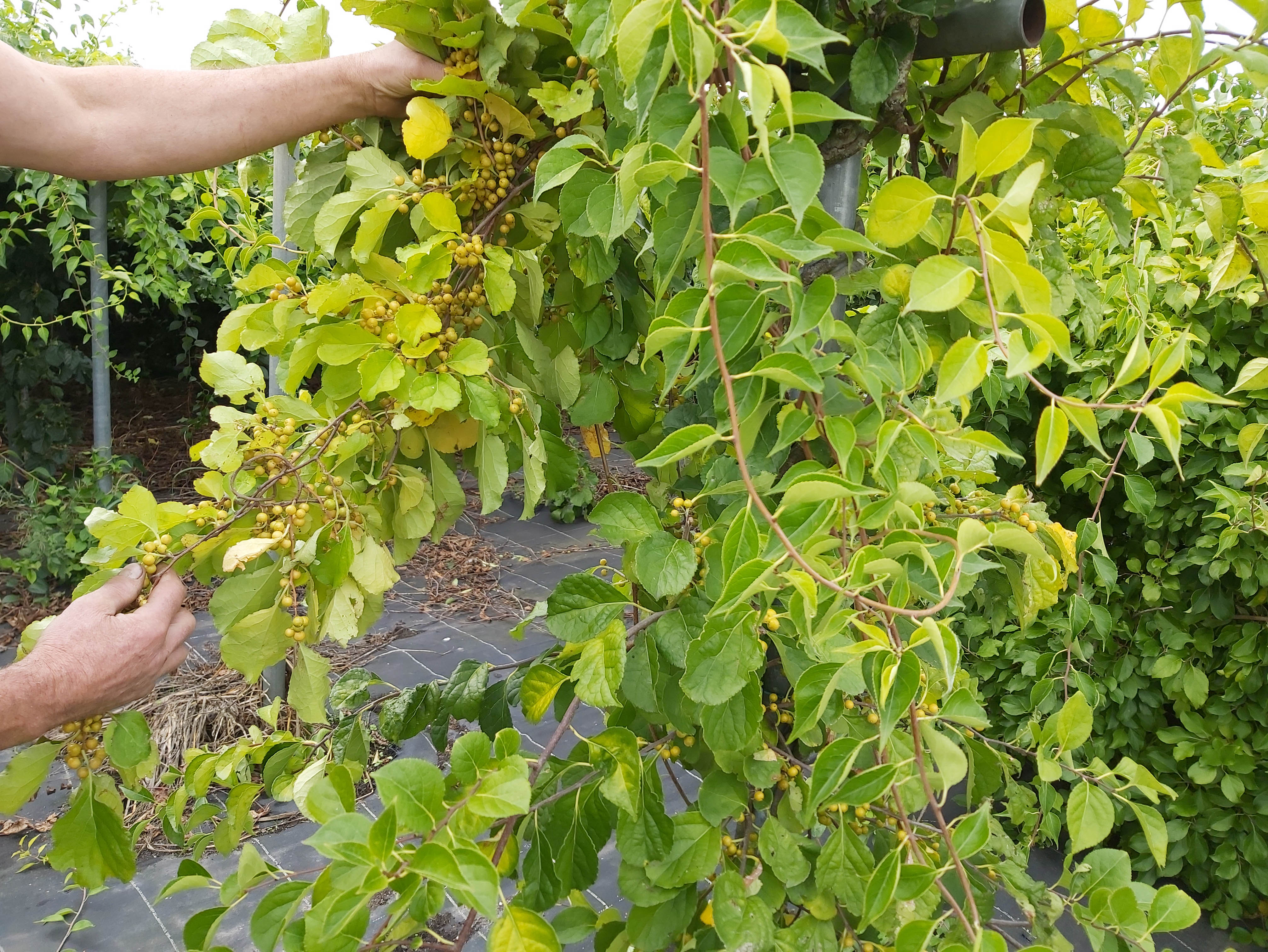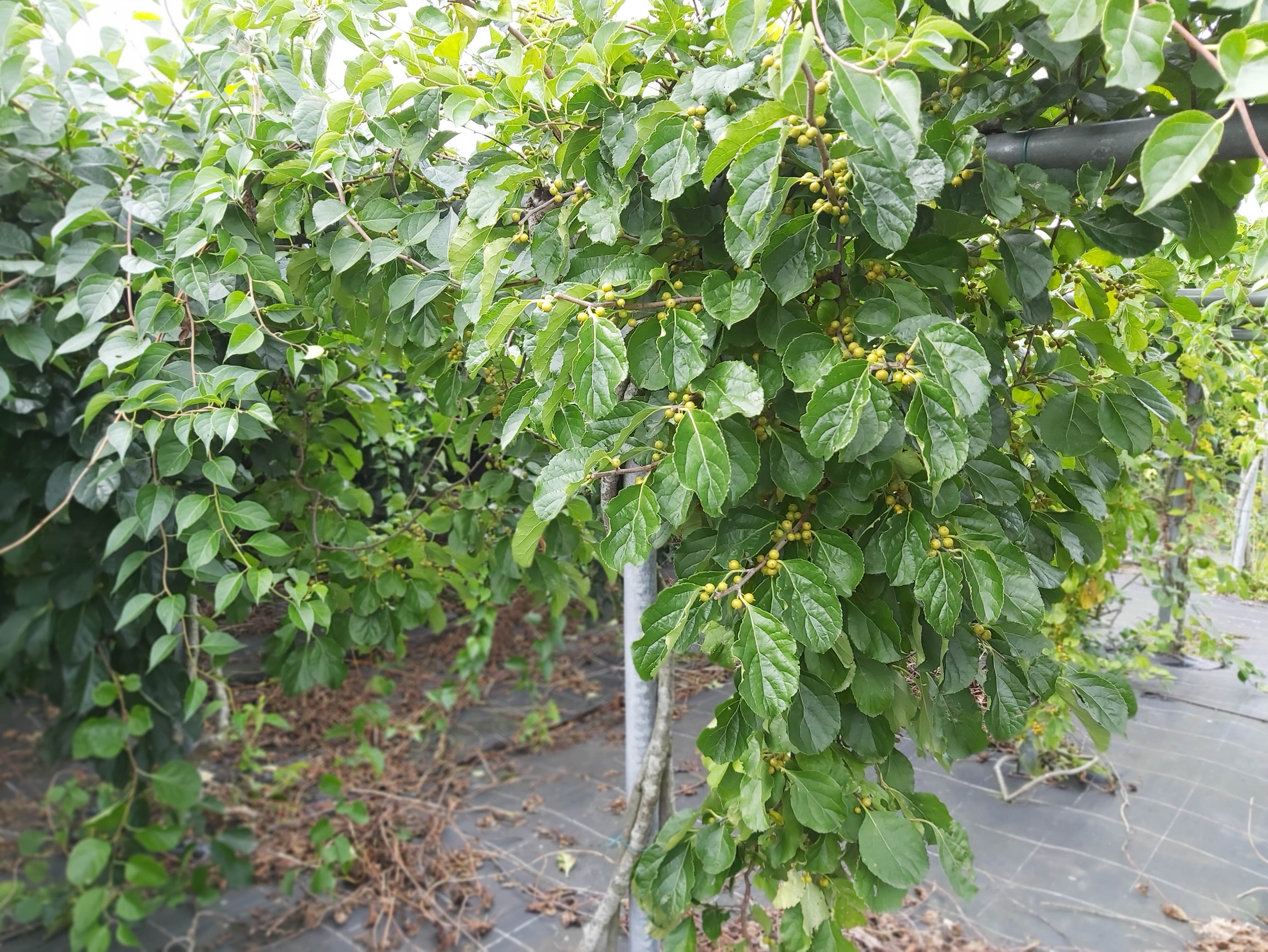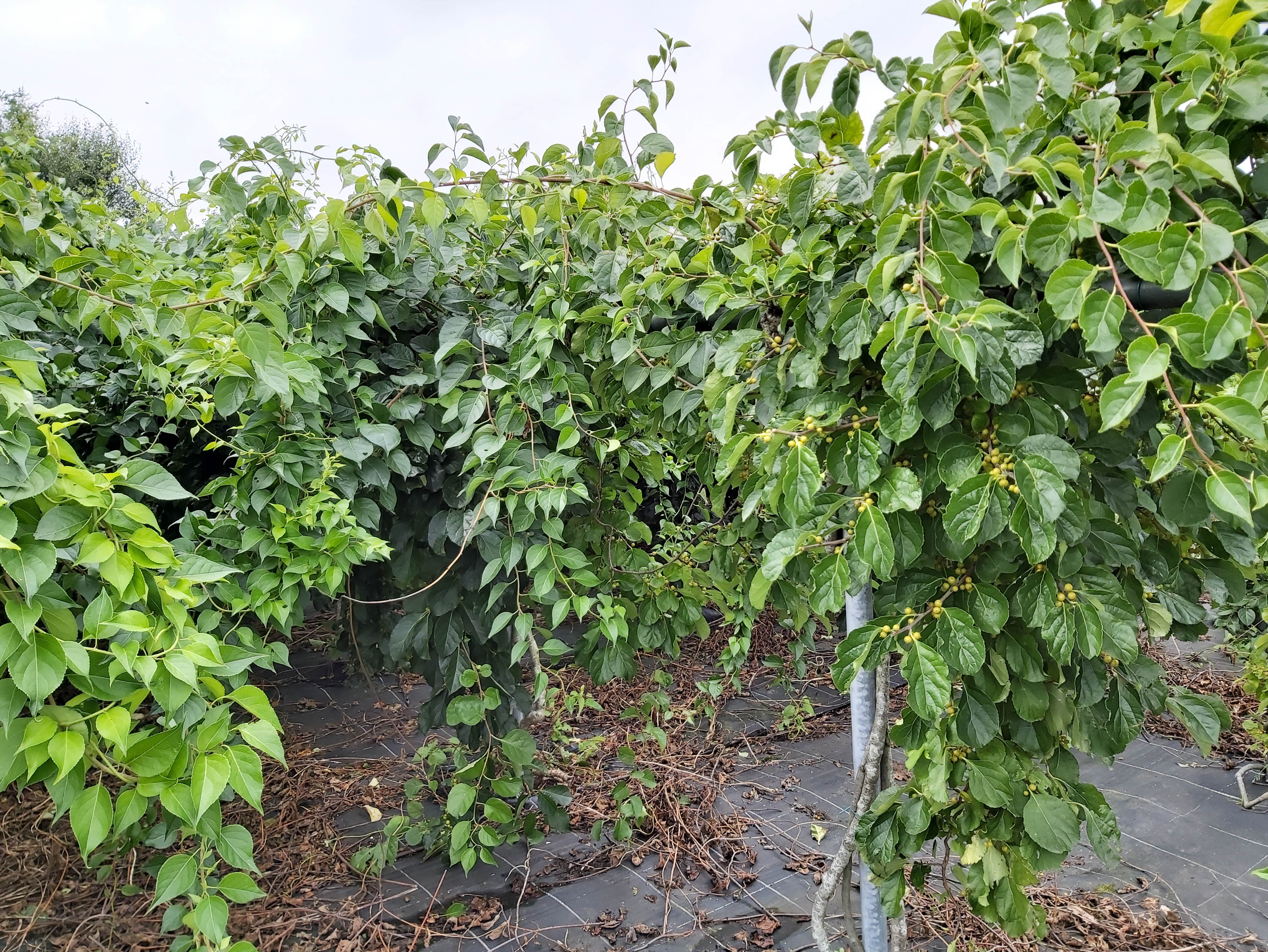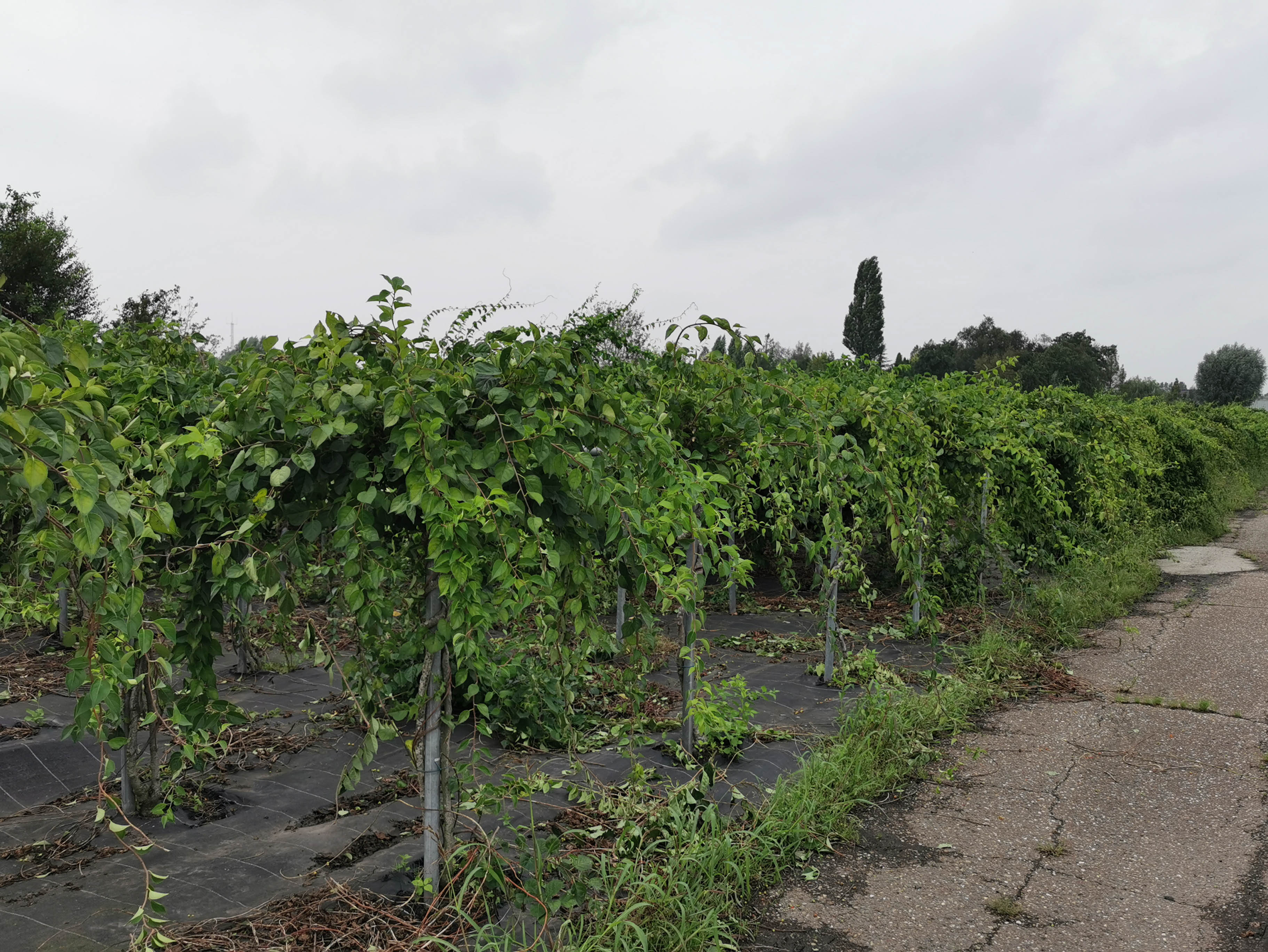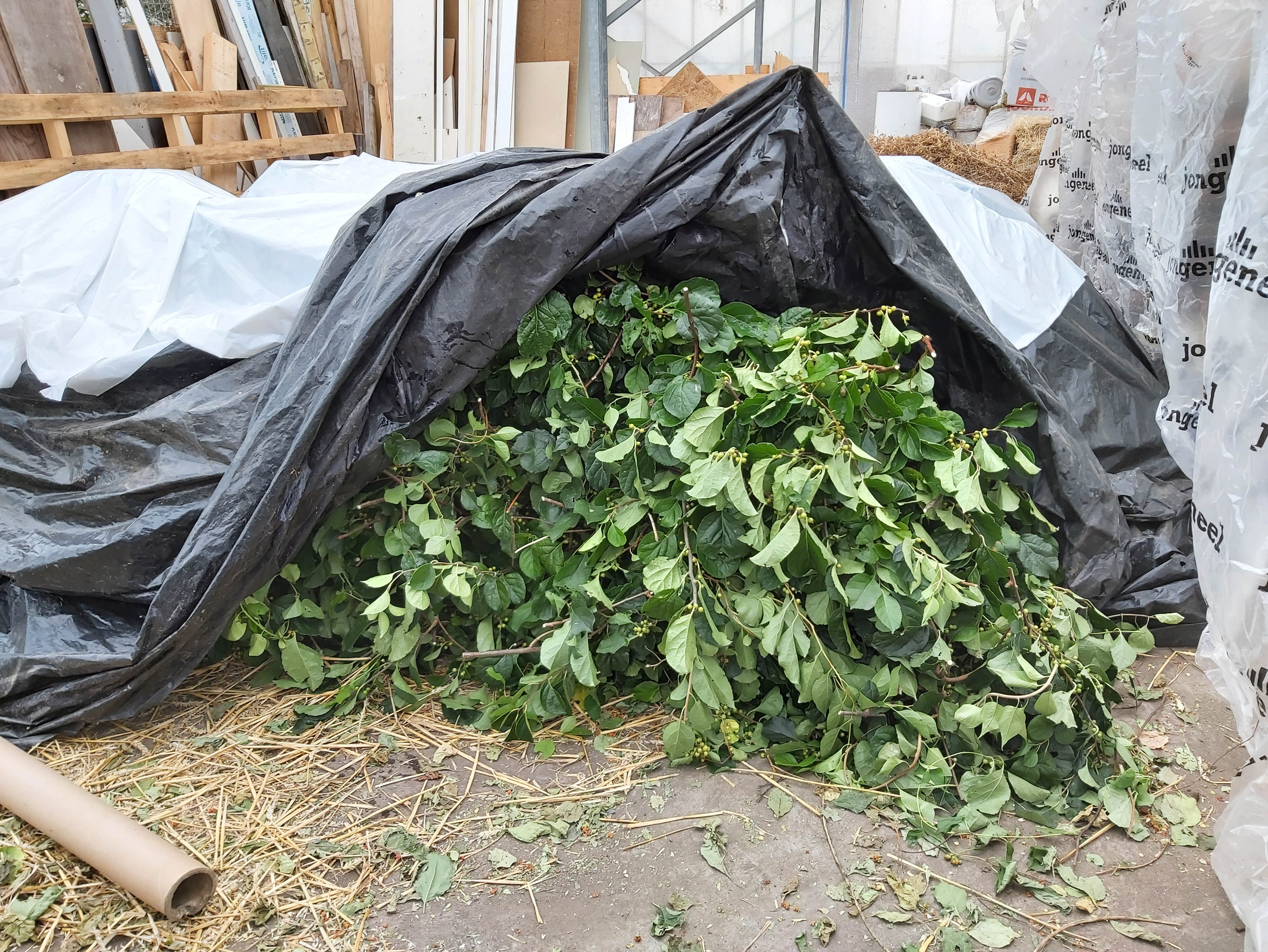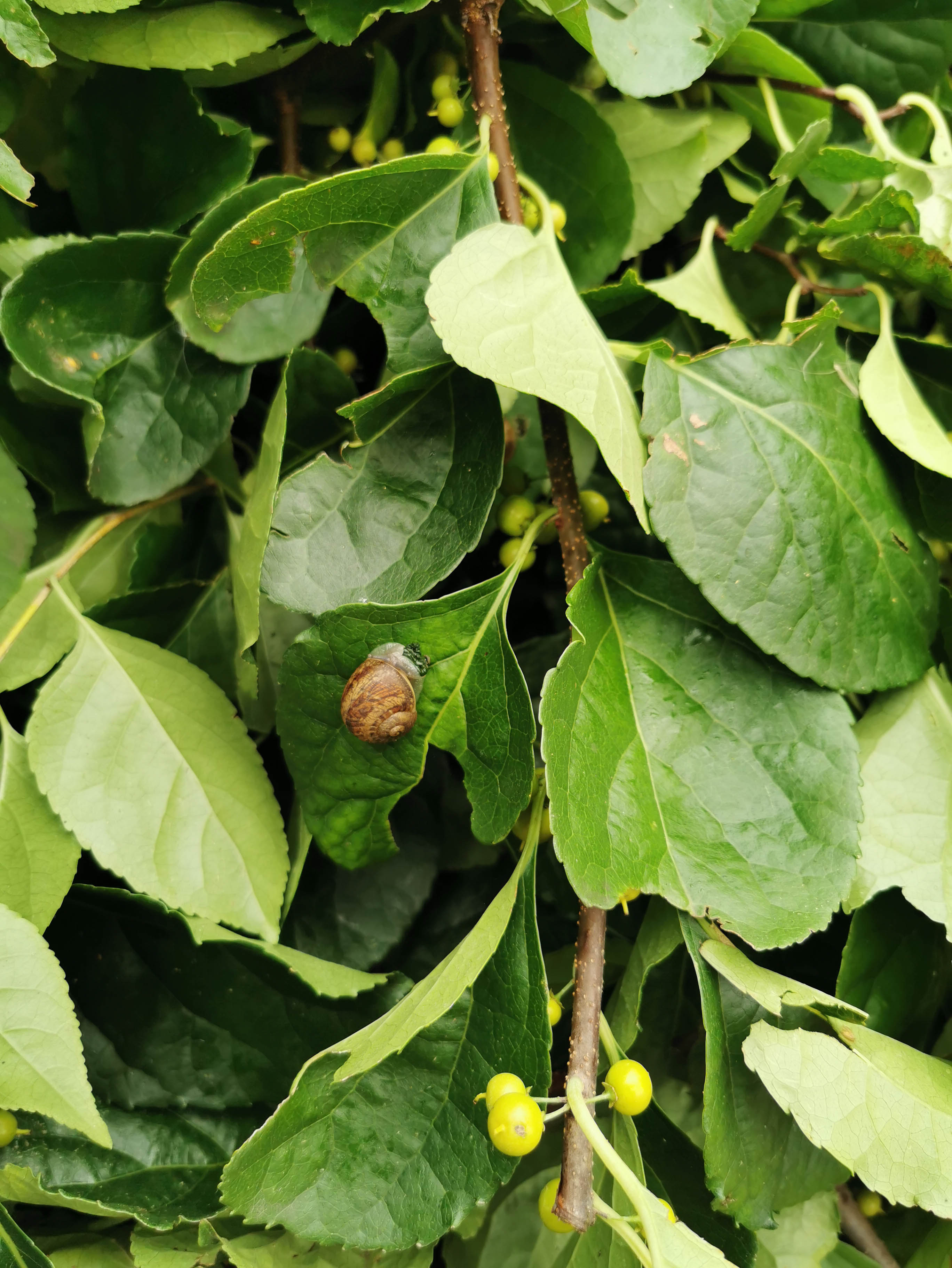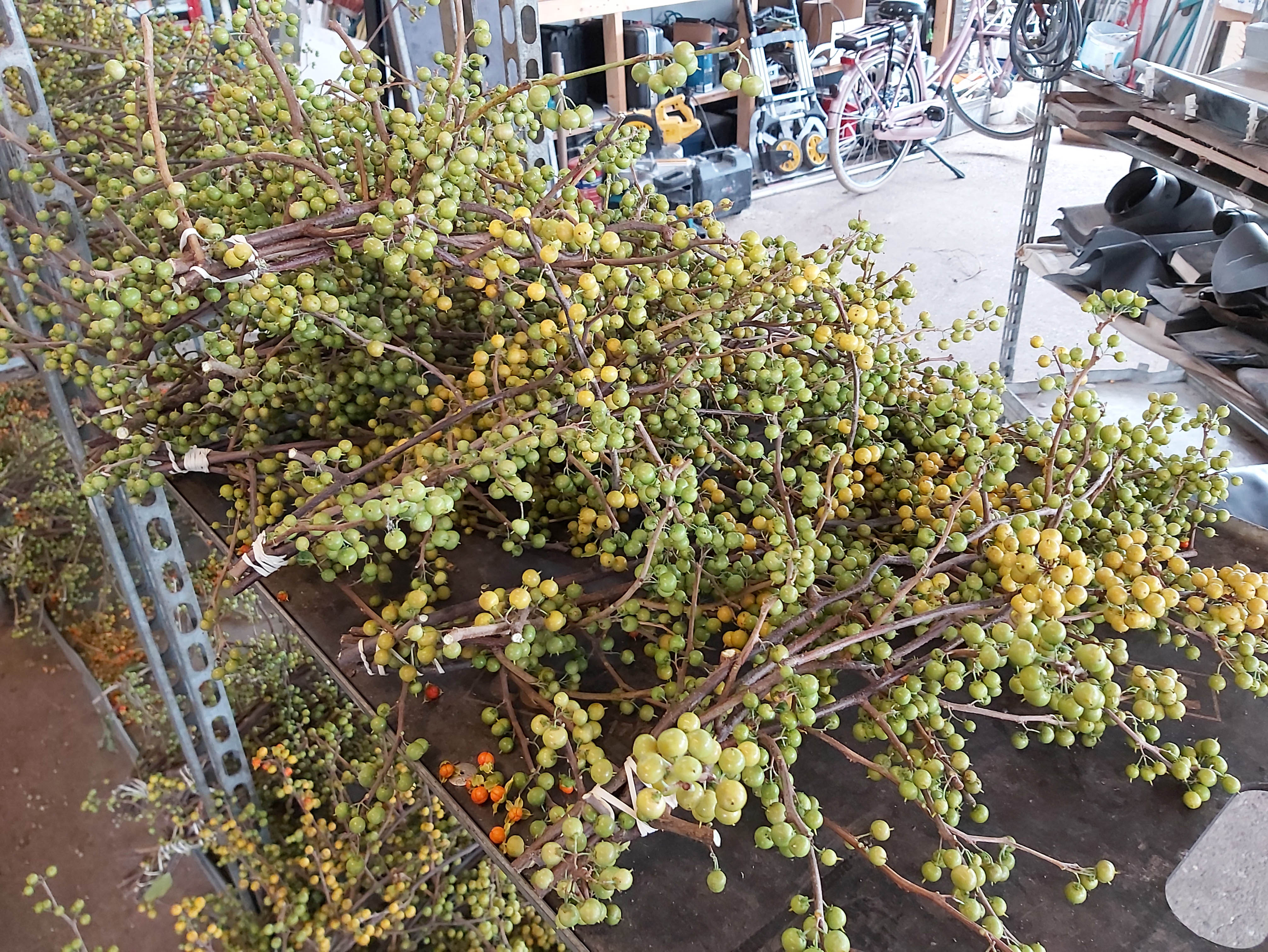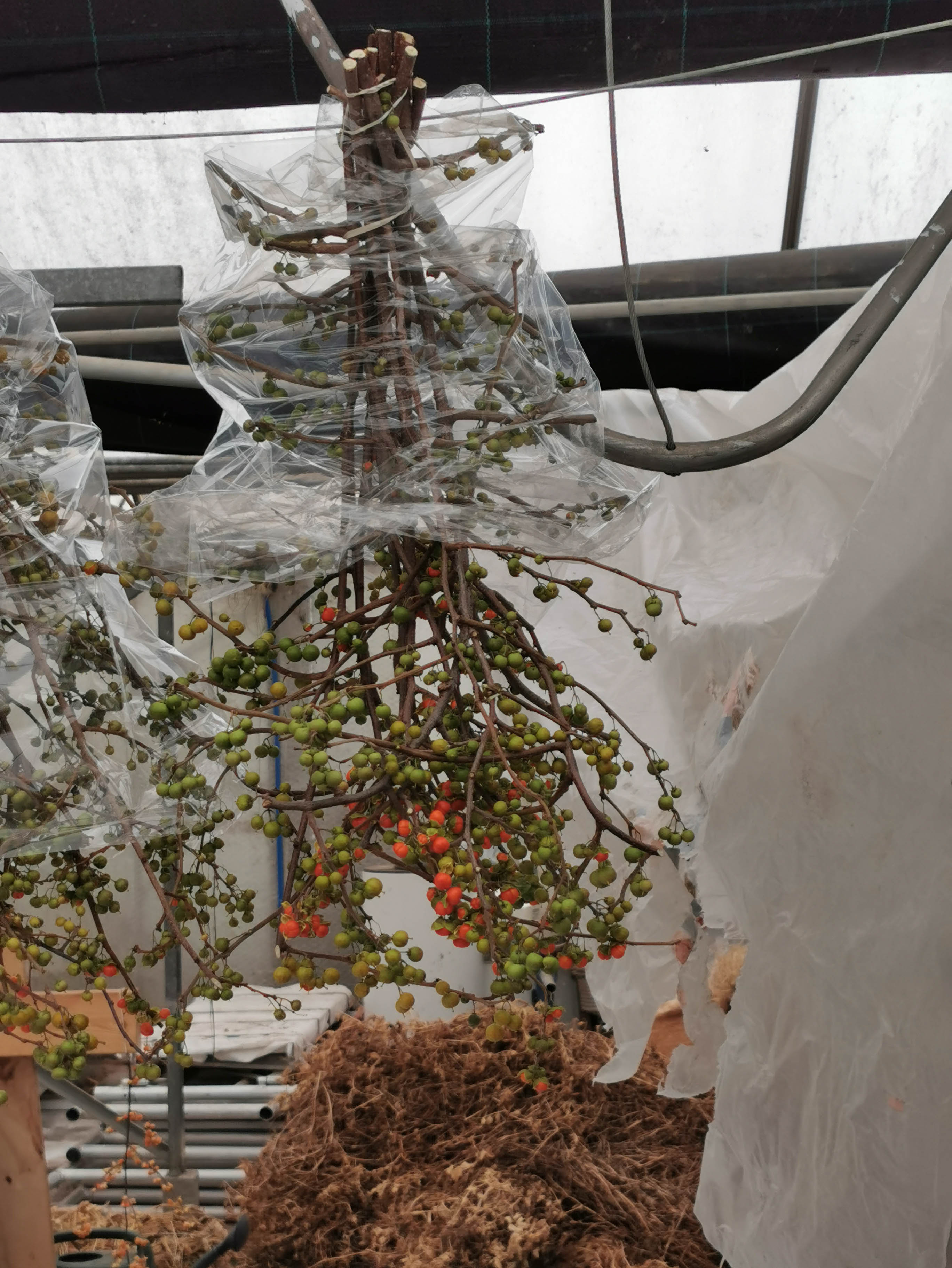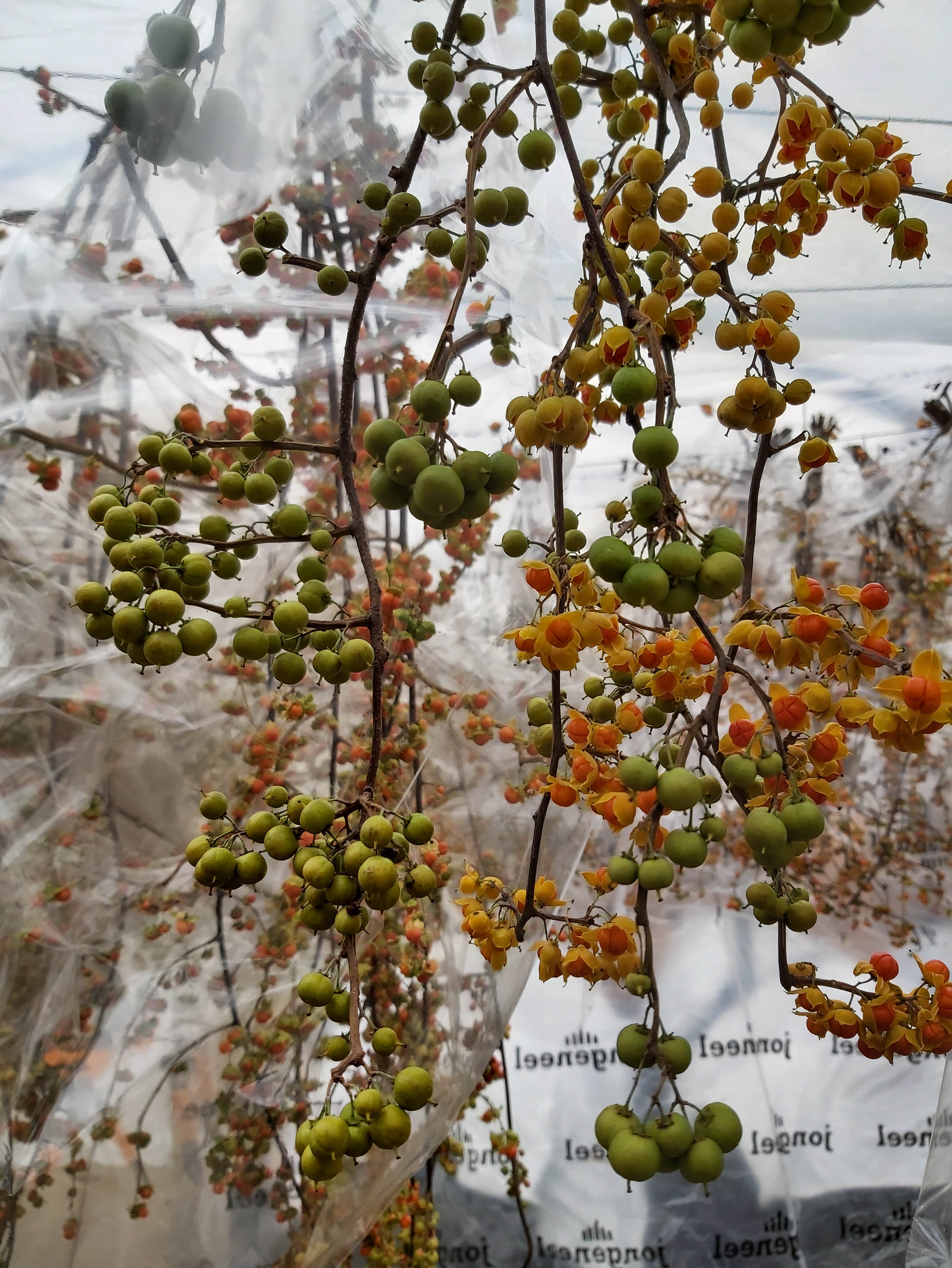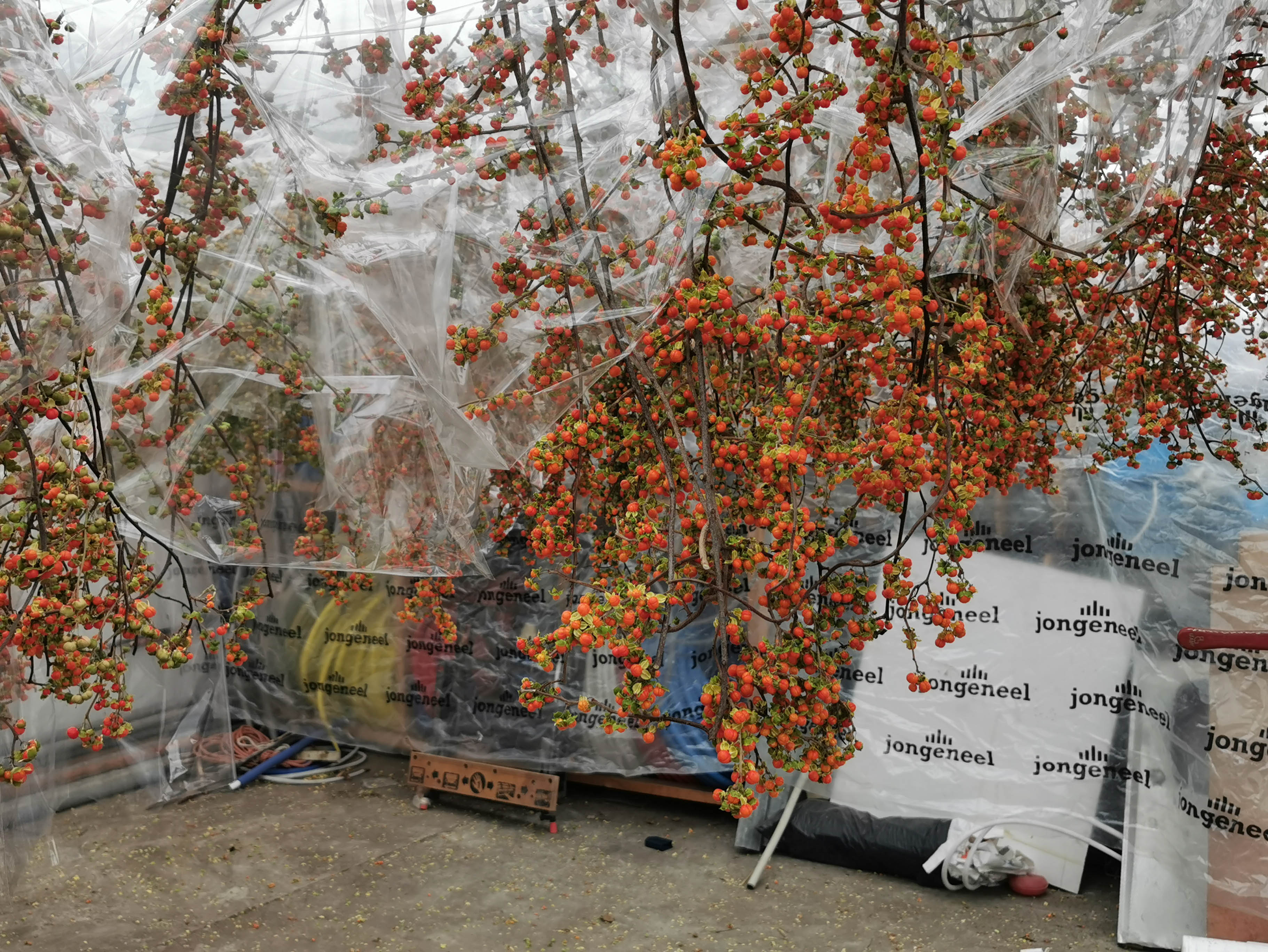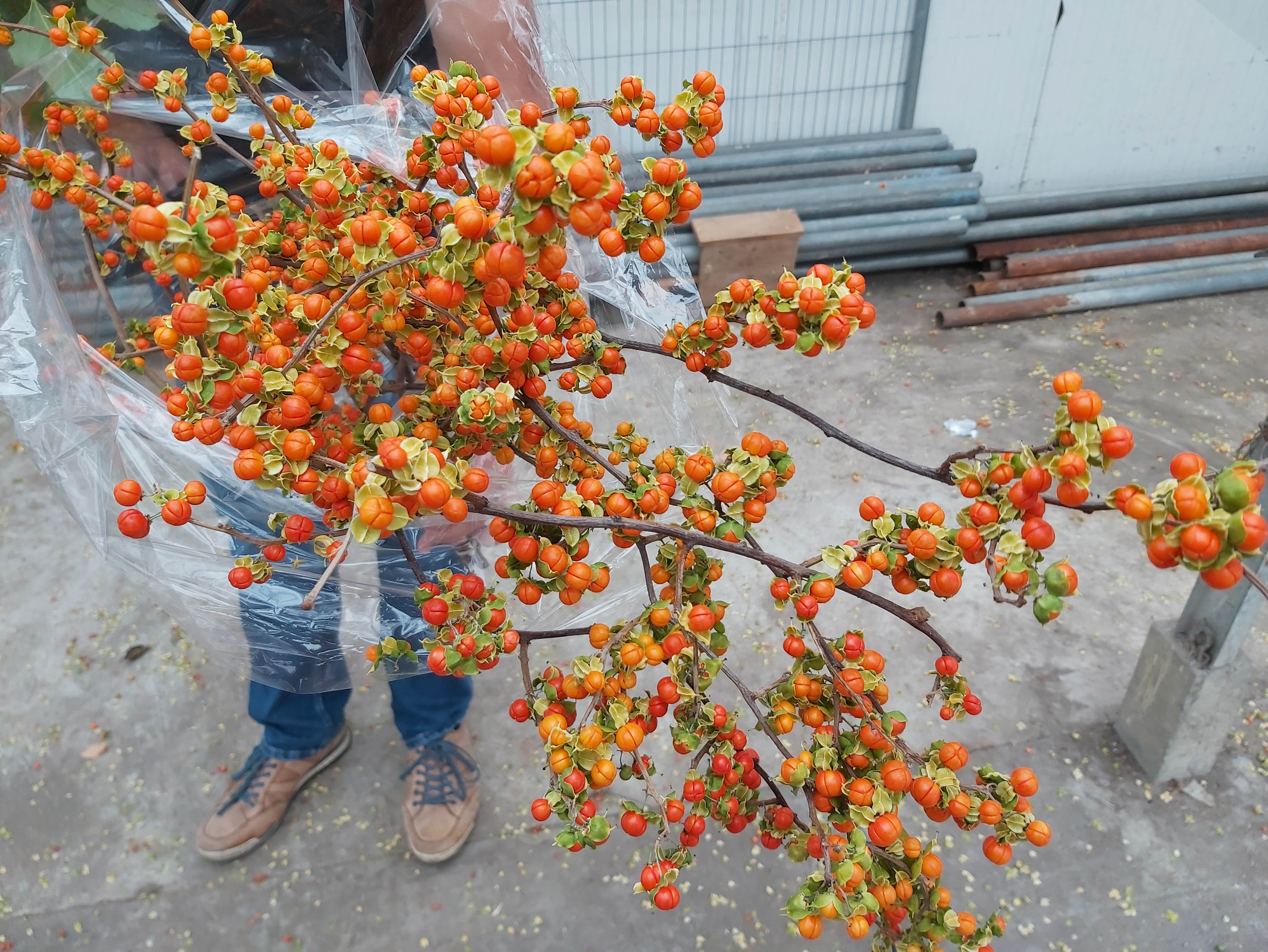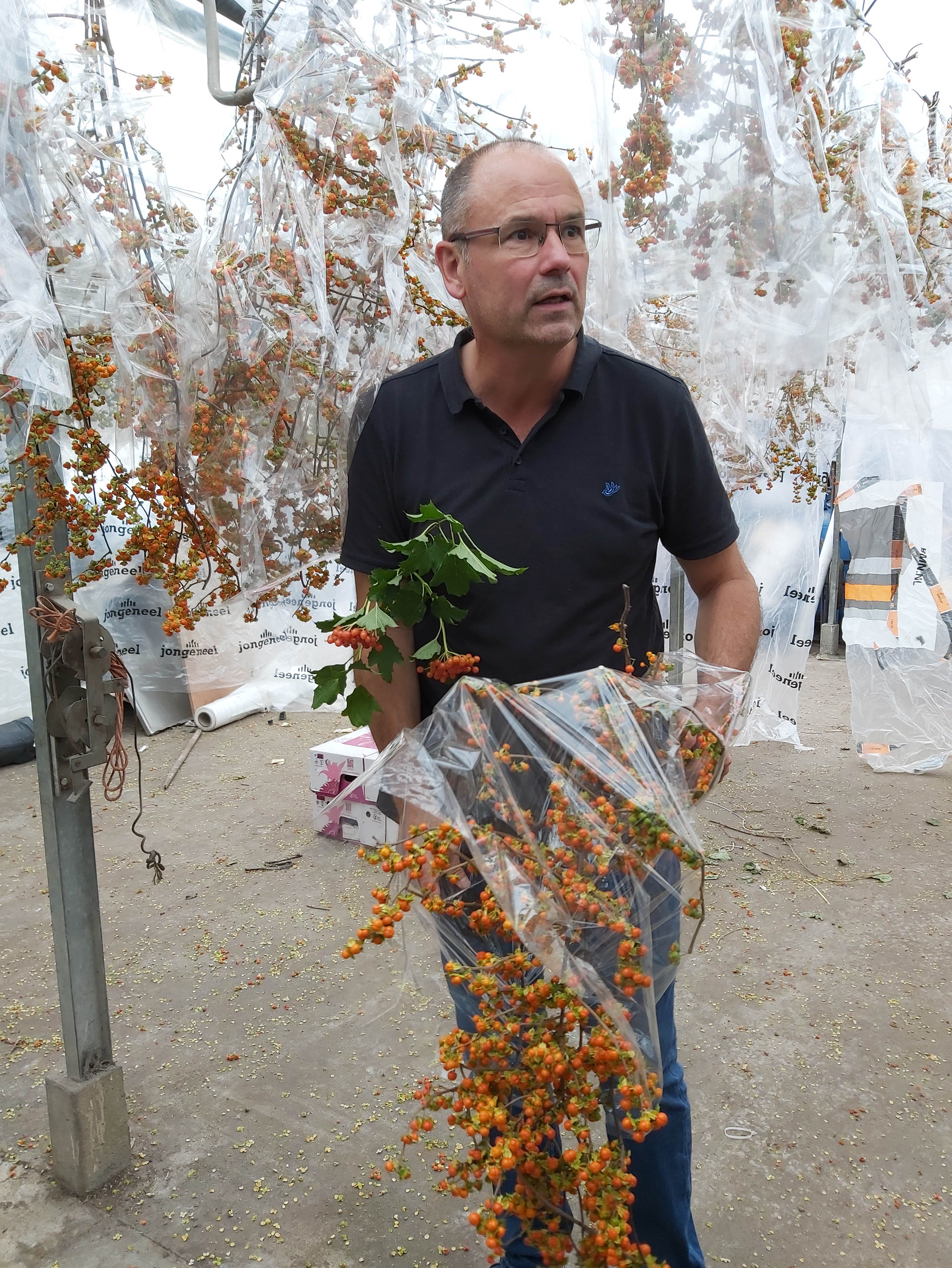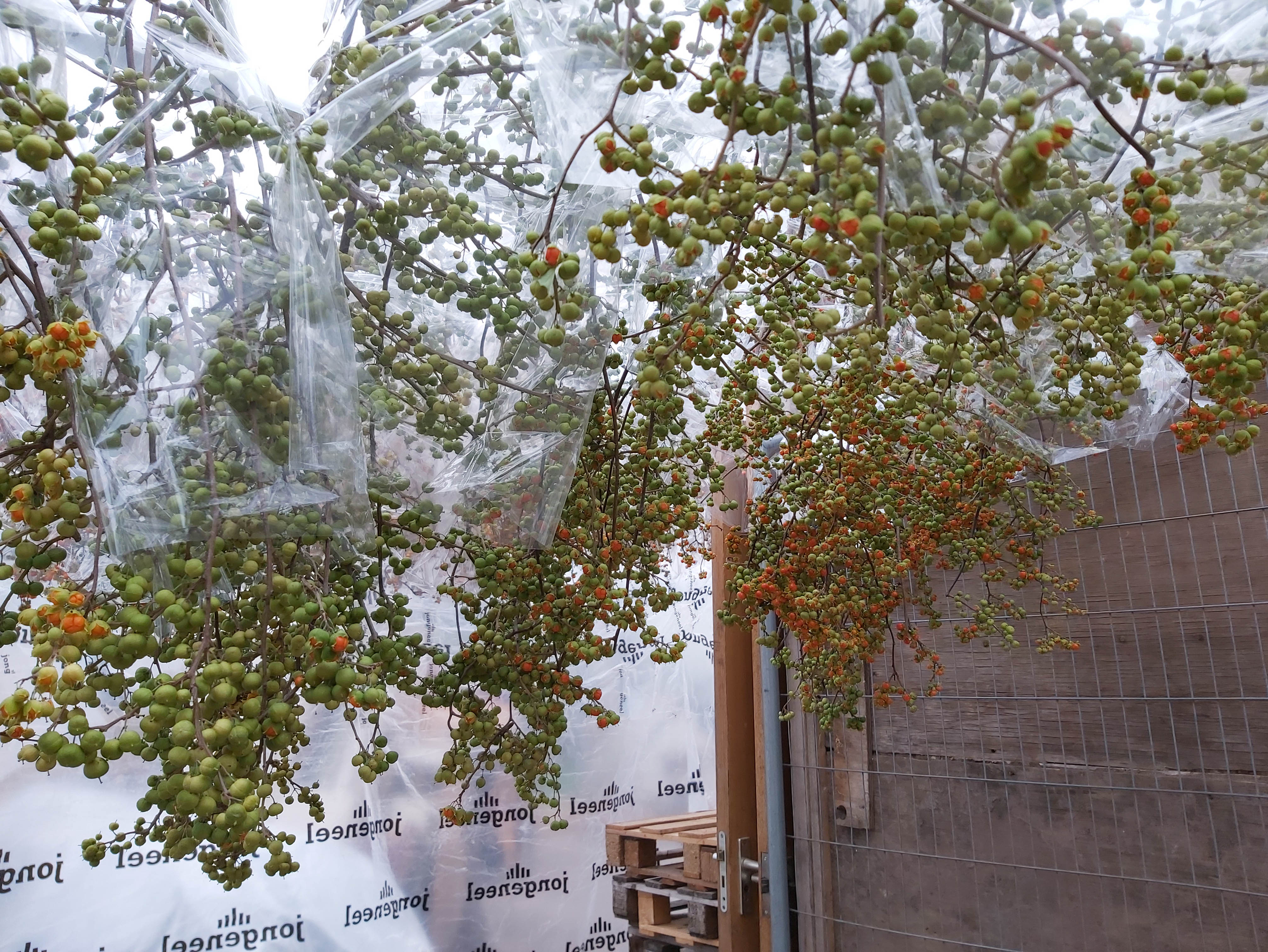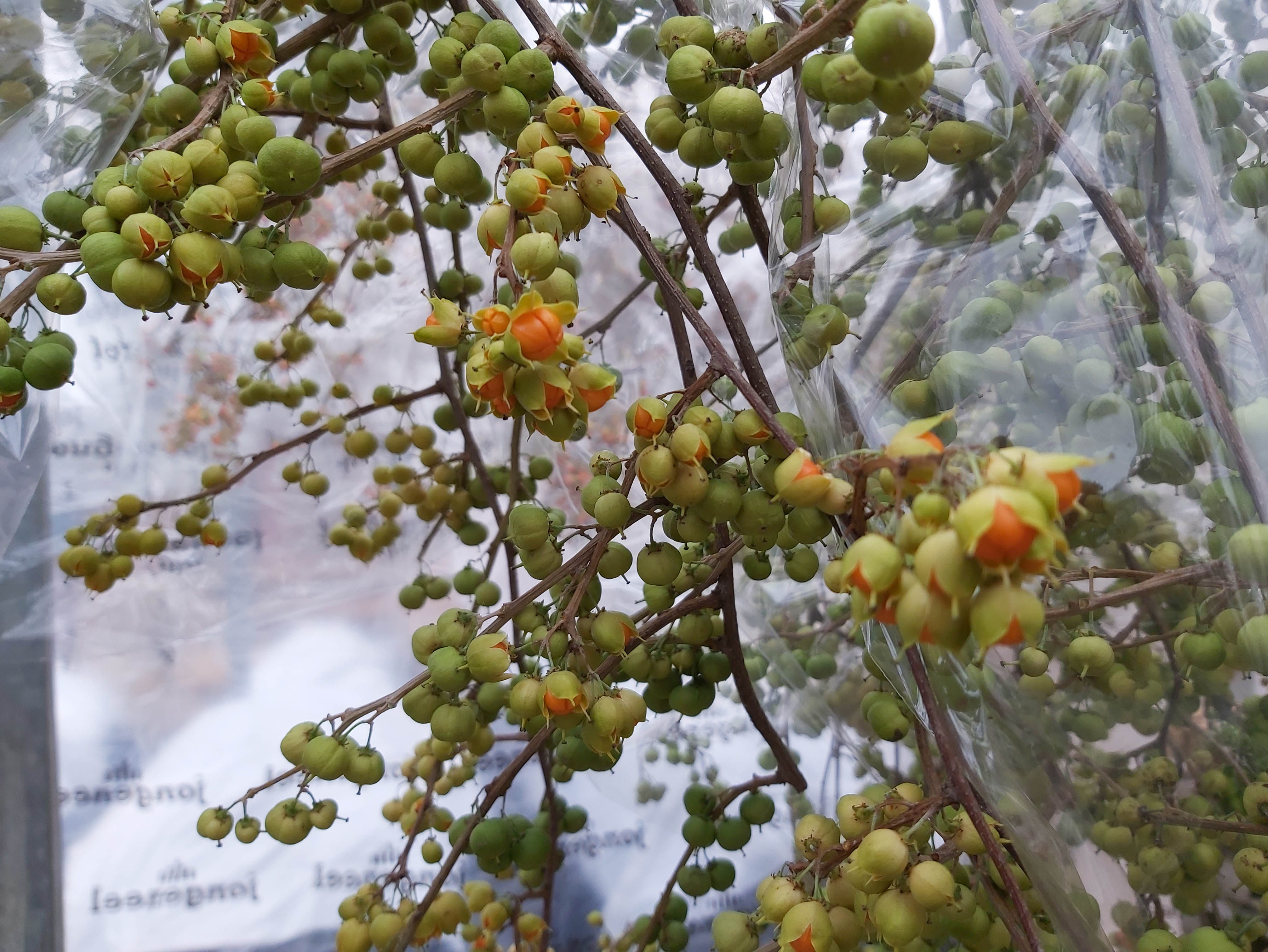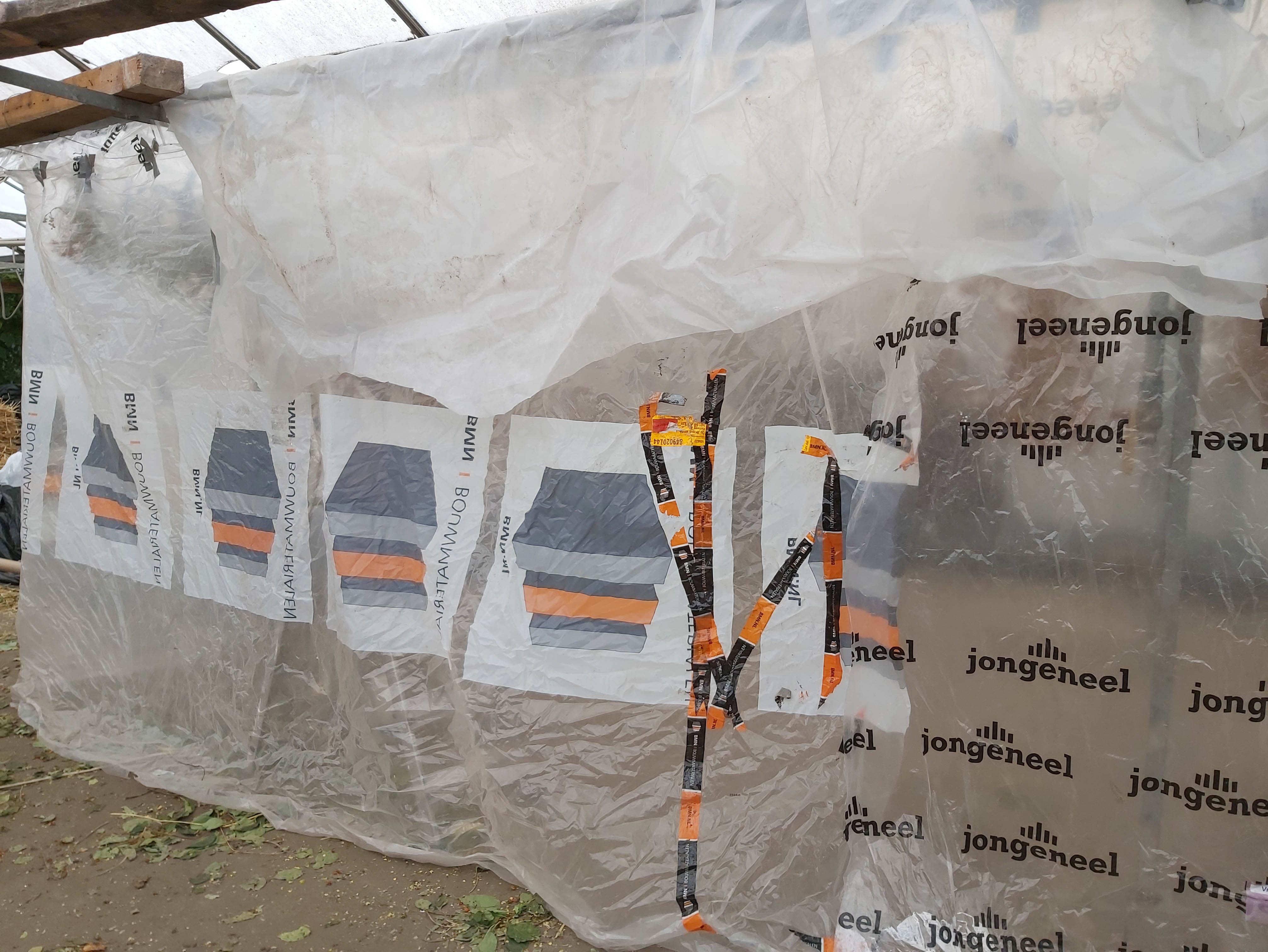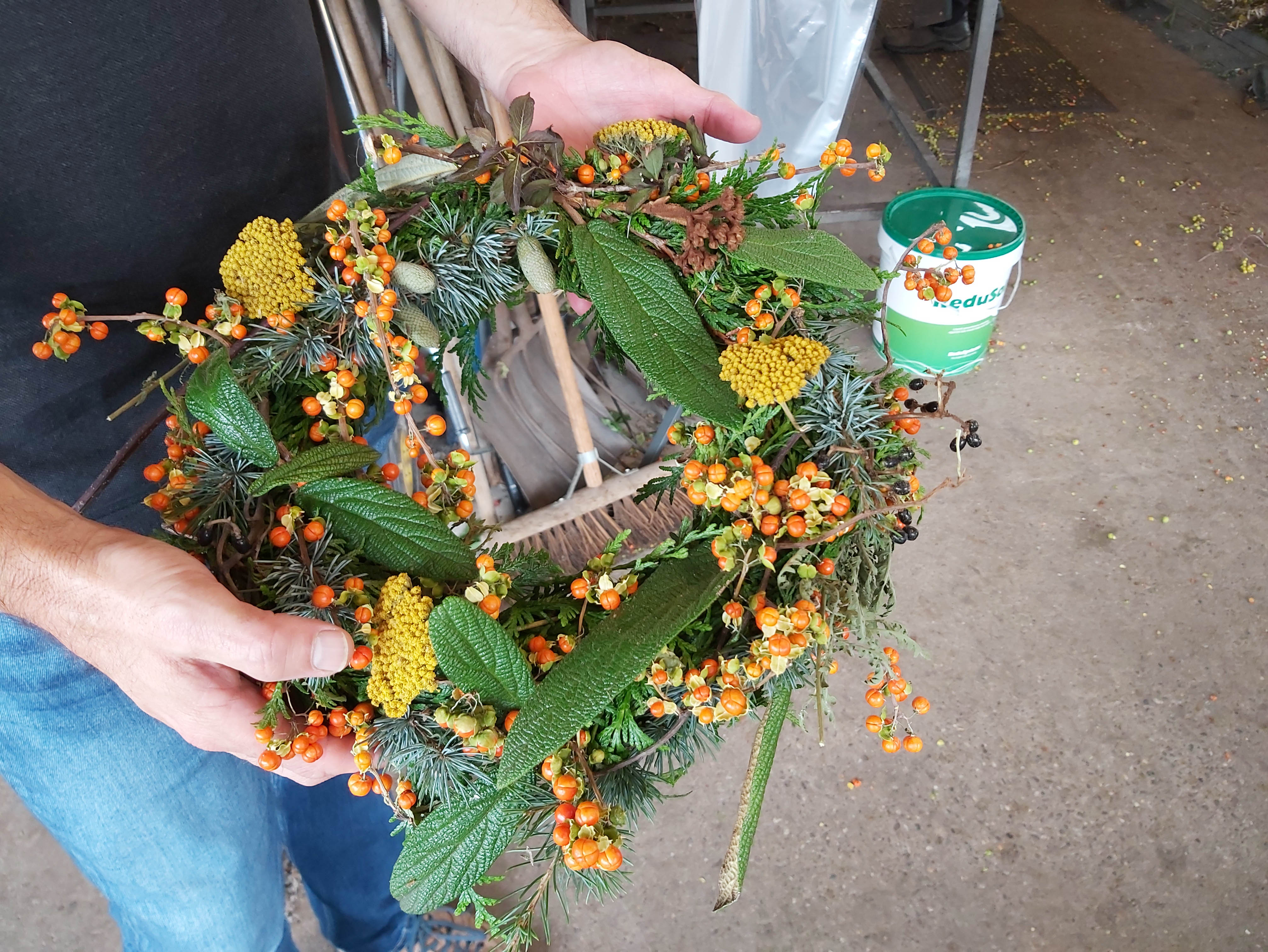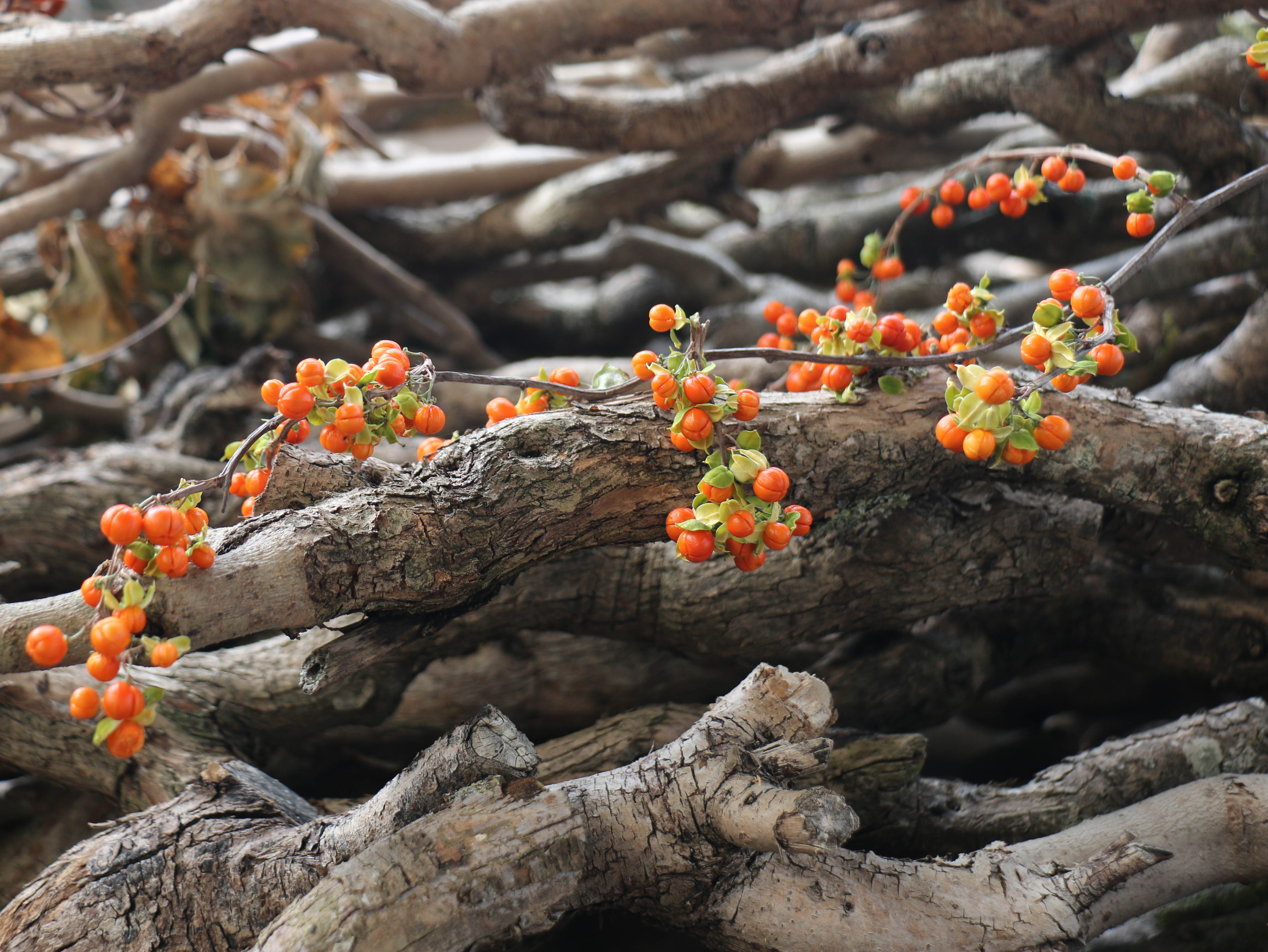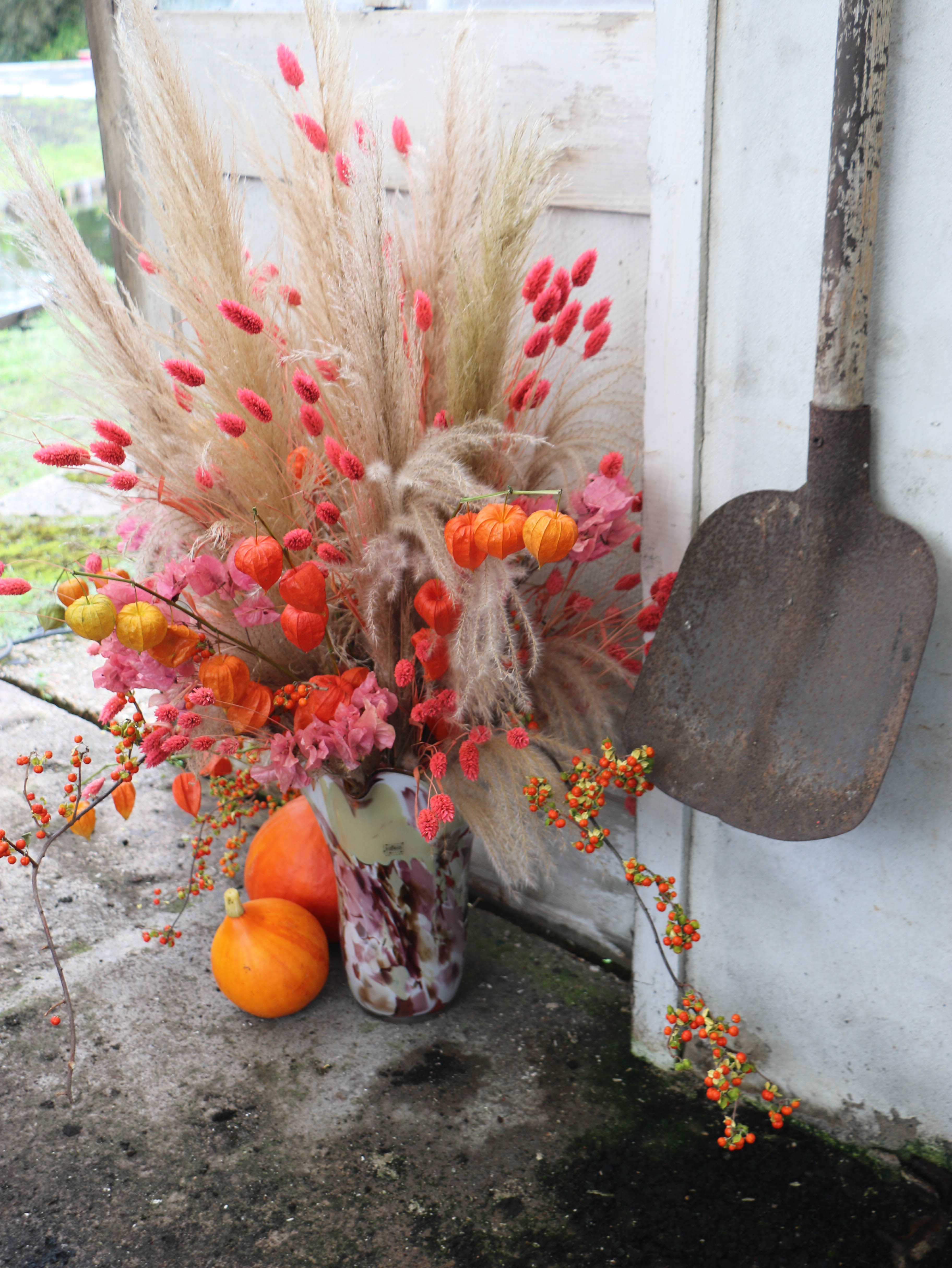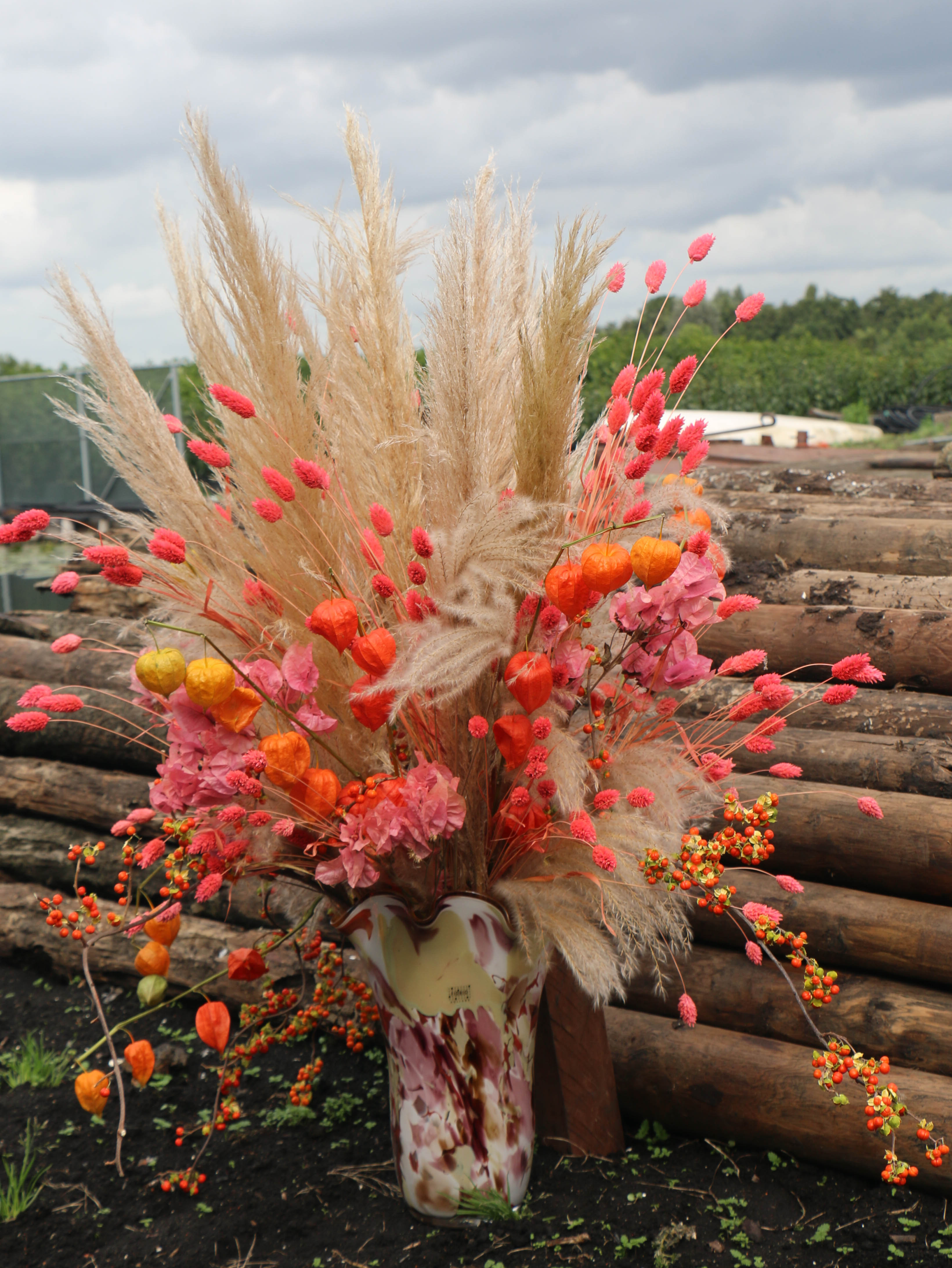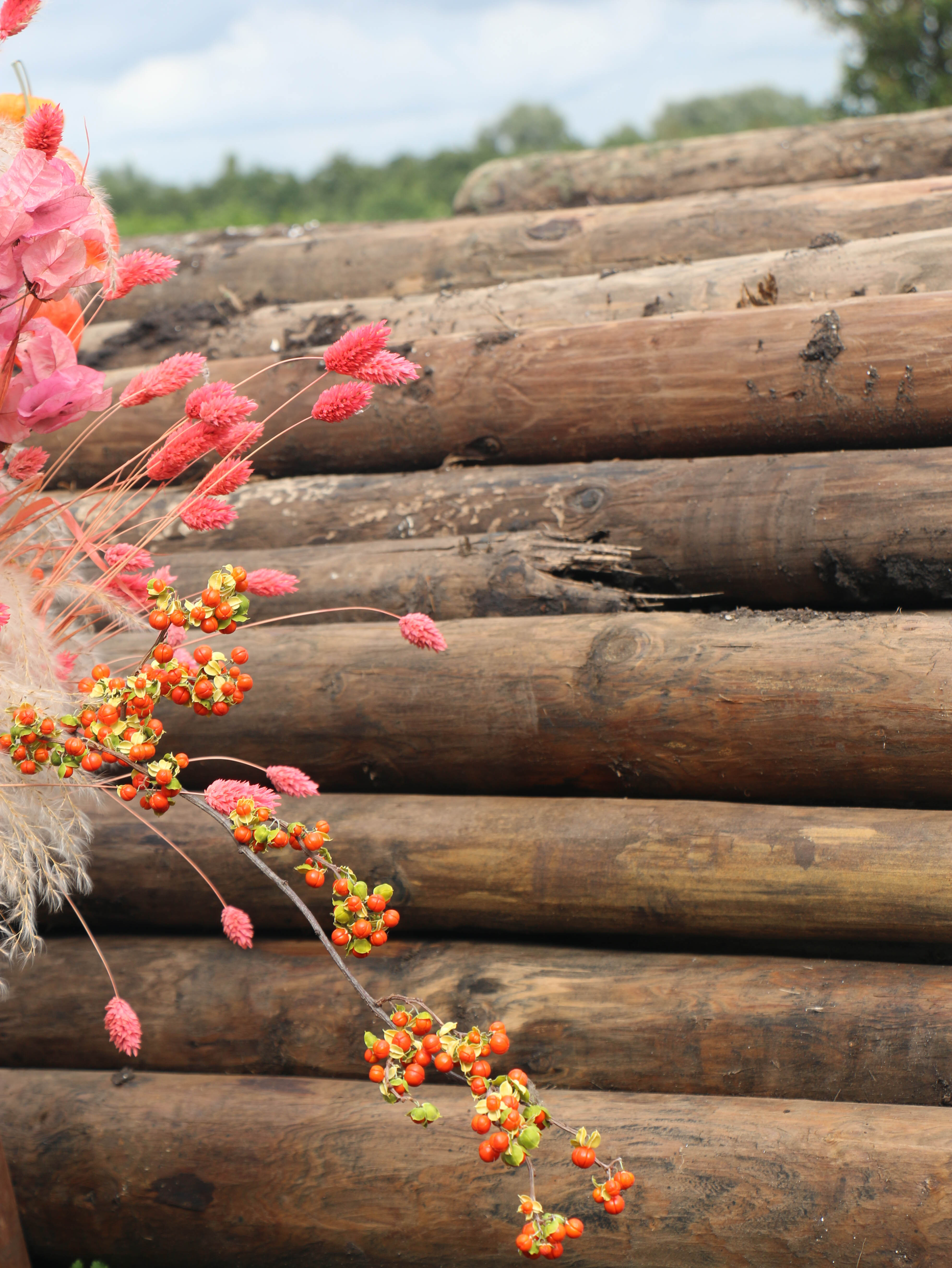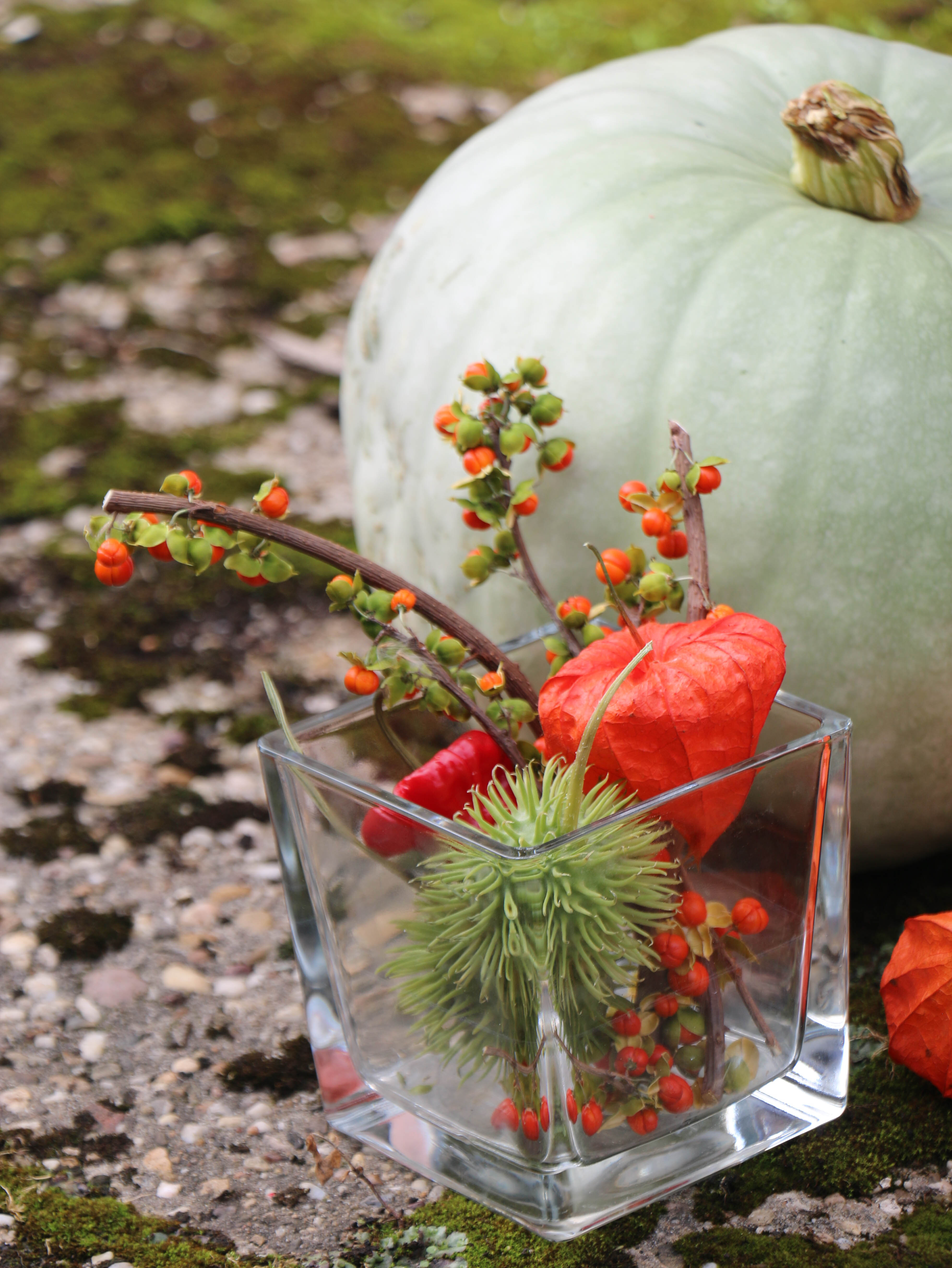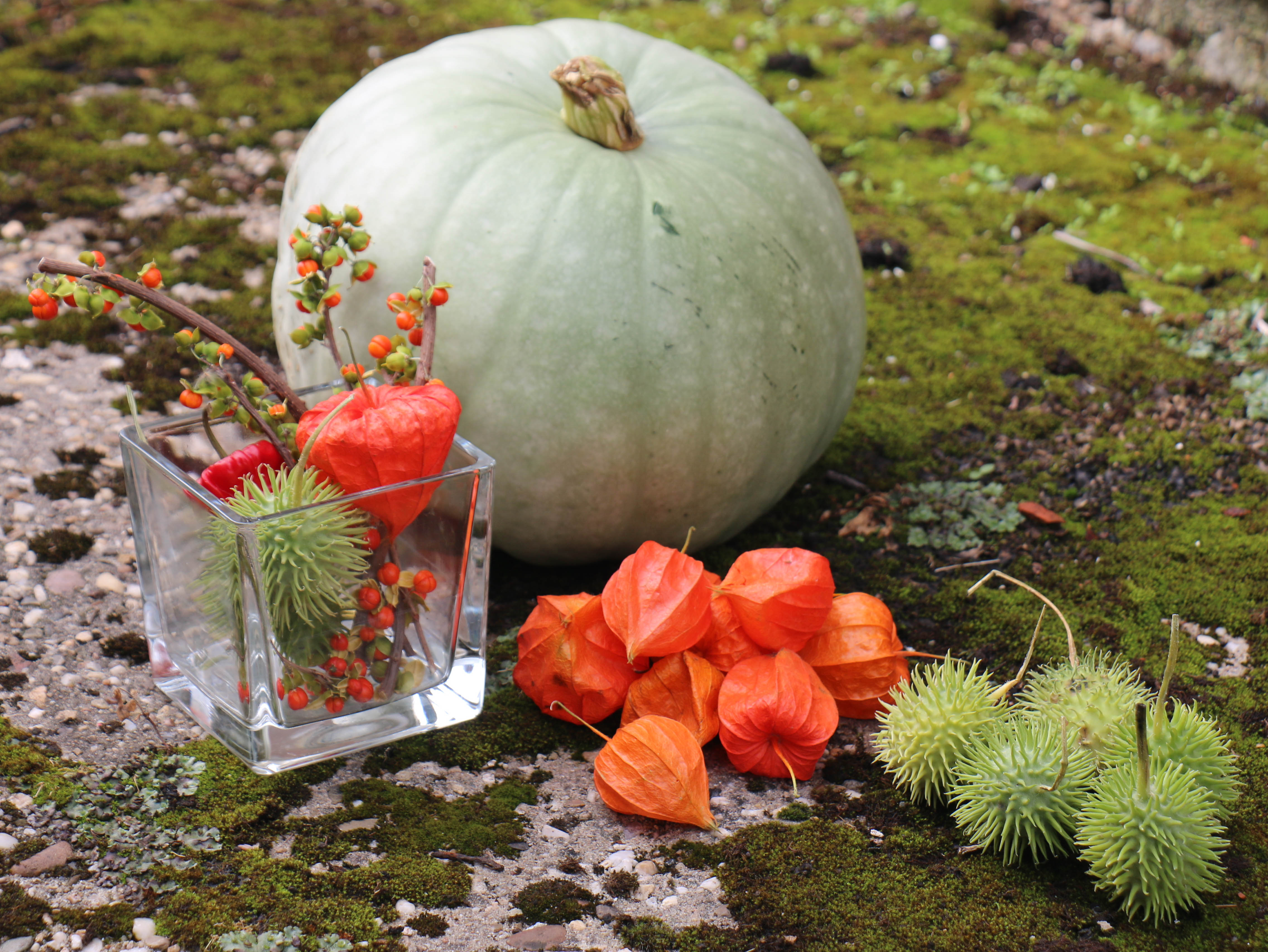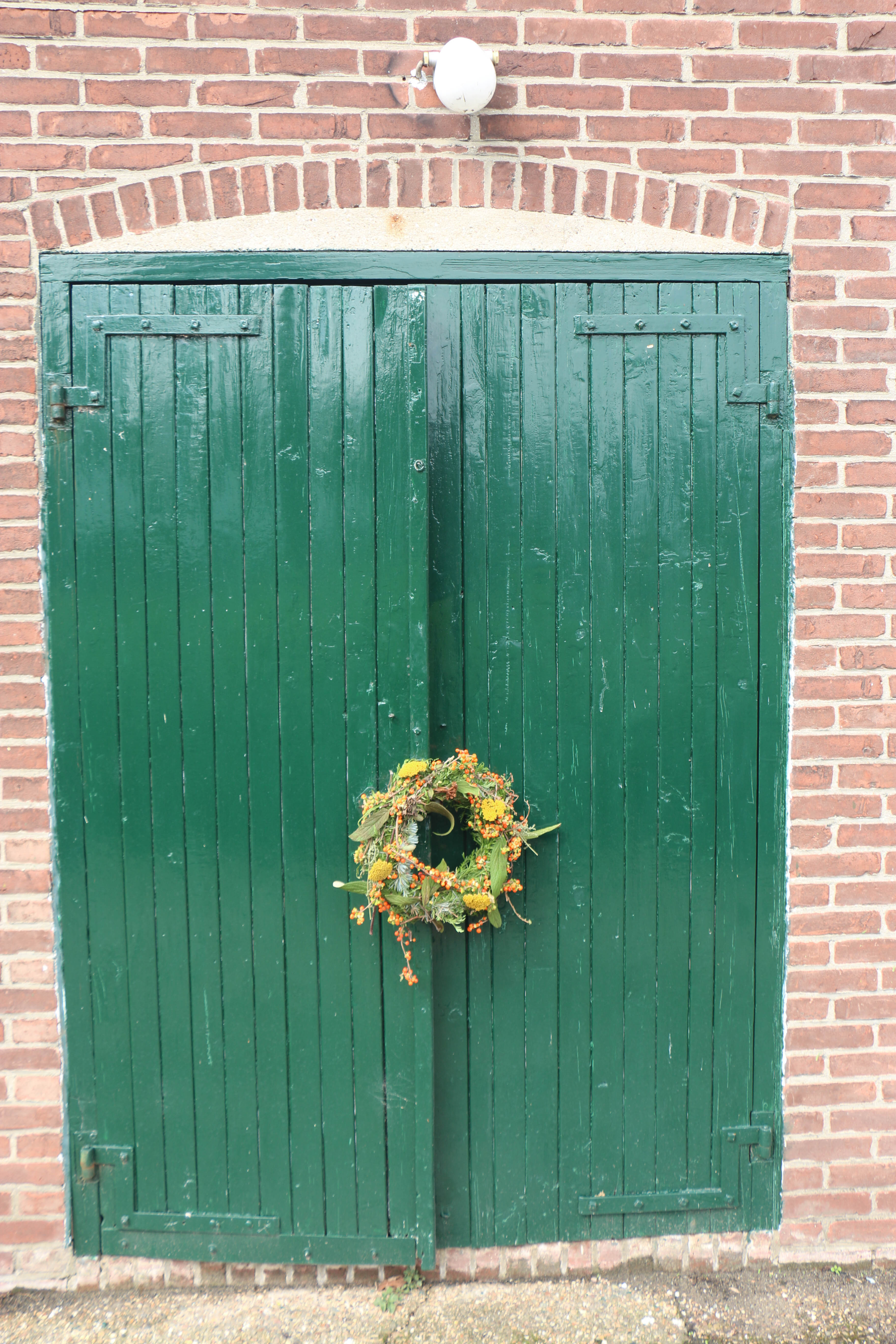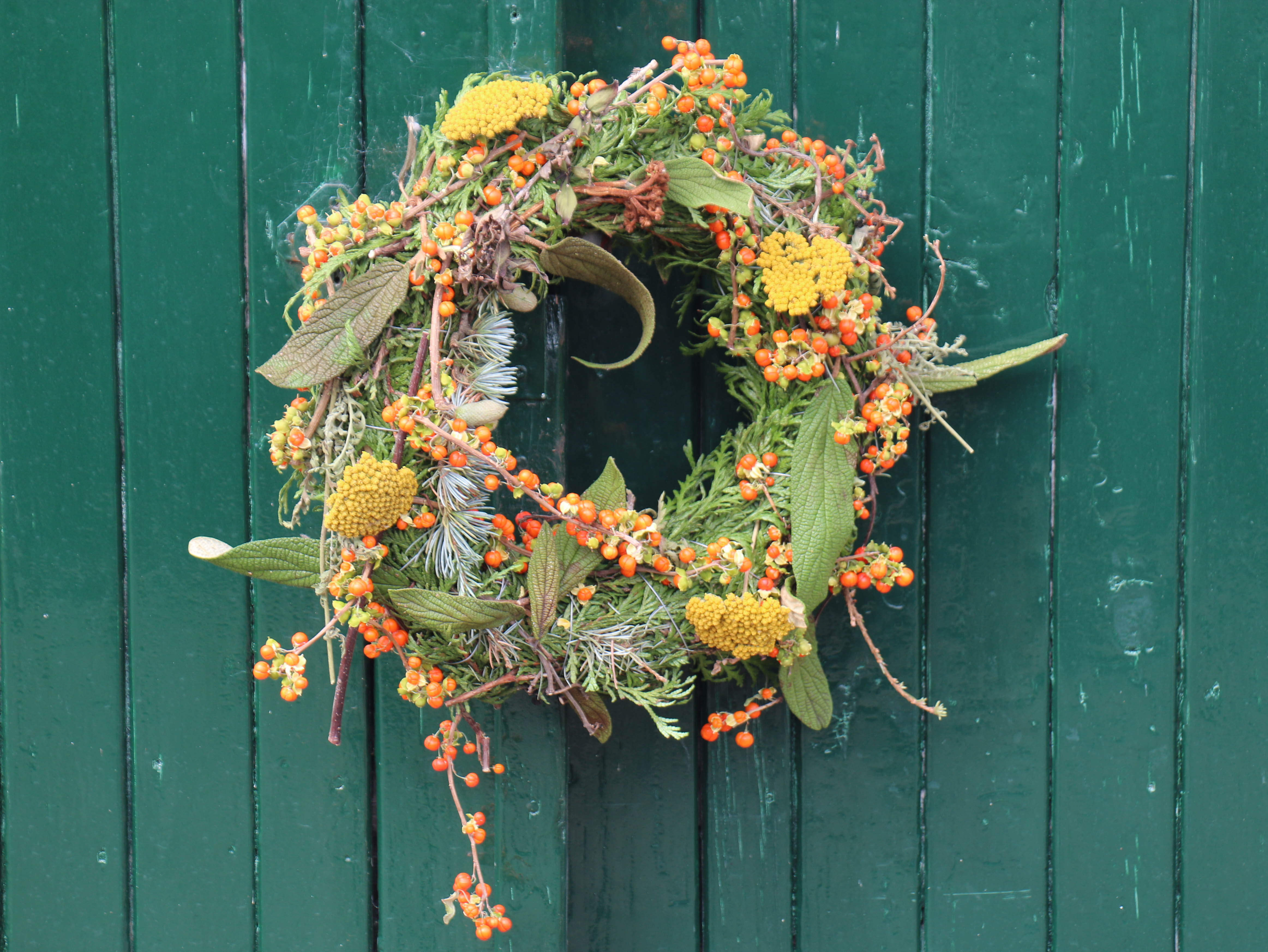This week at FloraPodium
Celastrus
Calendar
Celastrus is available from mid-August to mid-October.

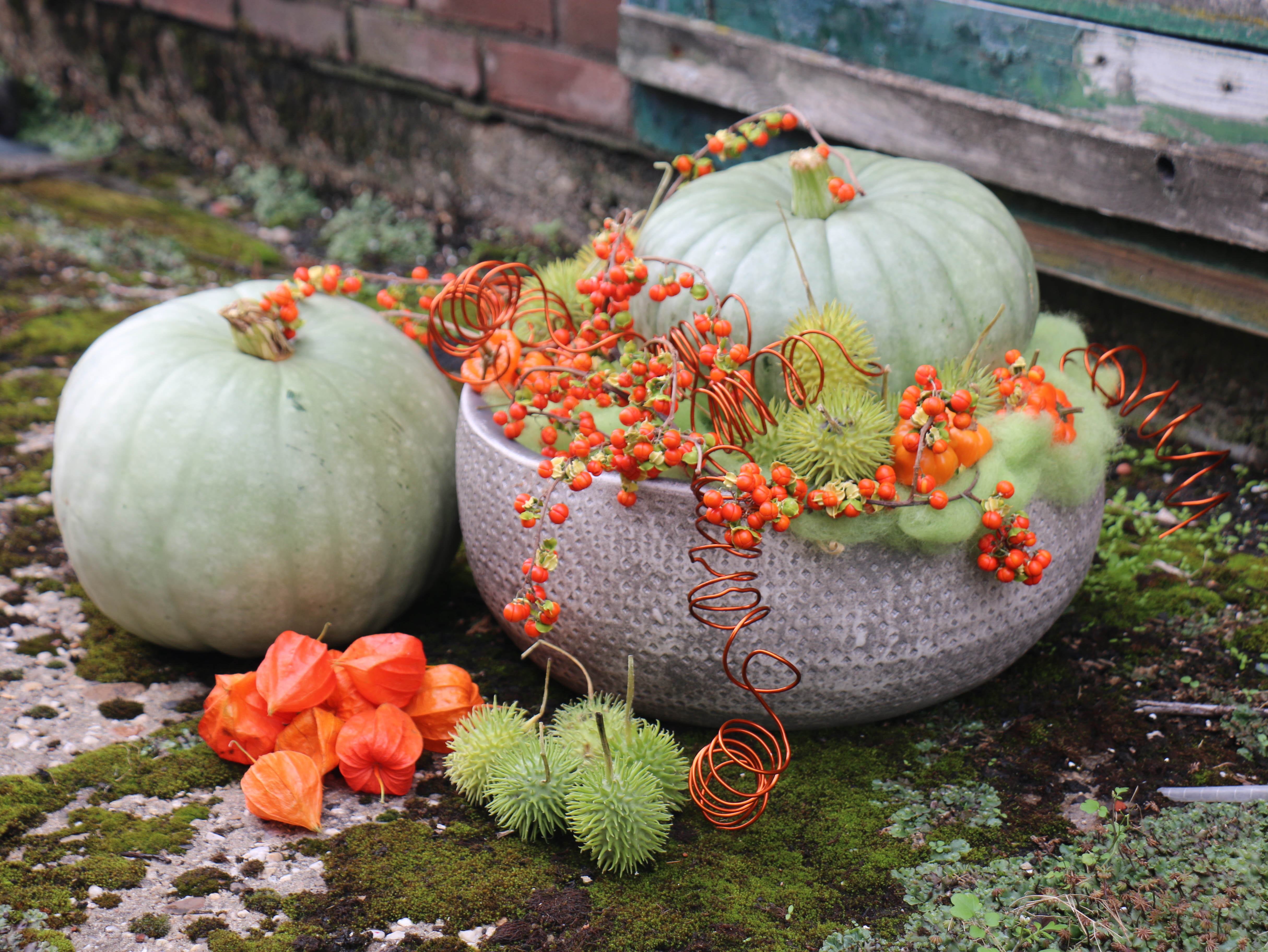
In the spotlights
There are an awful lot of beautiful, exclusive flowers and plants worldwide. But for most products it is not possible to take a look behind the scenes. There are simply not enough growers, the product is only available for a very short time or it’s grown abroad. And let's be honest; not every cook wants people to take a look in his kitchen! Celastrus is a product that was high on our wish list. Very exclusive, available for a short time and there are only a handful of growers. Fortunately, coincidence sometimes helps us a little too! We received a call from a Celastrus grower! We had to take this opportunity with both hands. Gratefully, we jumped into the car, completely unplanned. We were received very warmly and cordially by Corno and Jeannette Suijker in the shed where father Langelaar proudly but critically sorted the harvested branches.
Nursery Langelaar
"Kwekerij Langelaar" is a well-known name from the past. Jeannette's father is a retired grower and used to grow under this name. Corno and Jeannette have lived in this garden for a number of years, but her brother ran the nursery. Under the name Sijtjeshoeve, her brother not only cultivated various shrubs for the floriculture sector, but also produced worms for fishing. Last year he decided to say goodbye to the shrub garden and only wanted to continue with worm cultivation. Jeannette did not want to lose this beloved place and decided to take over the nursery. Suddenly Jeannette was a breeder! With the help and knowledge of her father and her husband Corno, who is also not unknown in the agricultural sector and who works very hard alongside his own job, Jeannette is not alone. Their five children and supporters also spend a lot of time off in the nursery. A fantastic, warm family that together and passionately breathe new life into the old concept of "Nursery Langelaar"!
Celastrus
Just getting straight to the point; Celastrus is beautiful, but very laborious! A niche product with which the professional can distinguish himself. Very few growers grow Celastrus and it is only available for a very short time, from mid-August to mid-October.
Celastrus may be a bit more expensive to purchase, but the pleasure and vase life make it worthwhile. The intensely colored berries add enormous value to any decoration. One florist cuts the branches into several small twigs and uses them in wreaths or small decorations. The other prefers to use long branches for large flower arrangements. Celastrus is a huge eye-catcher in a large vase in a hotel lobby, as a table decoration or as decoration at a wedding. For the consumer, one elegant branch can already be a true decoration on the sideboard or table. Plenty of options!
The biggest advantage is that the branch does not need to be in water. As soon as the branches are harvested, the branch dries up and remains beautiful for months.
Dried flowers are completely hip again! And that is beneficial for Celastrus enthusiasts. Because in the current trend, in which dry bouquets are sold like hot cakes, the branches naturally fit very well! Dried flowers are generally a bit fainter in color, the Celastrus gives the whole bouquet a huge color boost.
Cultivation
Celastrus is a very special shrub crop native to Southeast Asia. Popularly, this creeper is also known as "tree strangler", and for good reason. Celastrus takes root in the ground, but grows further as a climber in another shrub or tree. Their hold is so tight that the tree or shrub will definitely lose out against this powerful embrace.
Laborable crop
We expected to see a whole field of dead trees with Celastrus around it. But it was nothing like that! At Corno and Jeannette’s, the large shrubs grow wildly over galvanized steel racks. This is steel that does not rust, so there is no stain on the branches or soil contamination. Harvesting only takes place a few weeks a year, but there is a lot more to cultivation. As soon as the leaves fall from the bushes in autumn, the long branches must be pruned. The berries only grow in the first part of the branch, the rest only costs the plant unnecessary energy. Better to delete this part.
In spring the leaves start to grow and the first flowers appear. The Celastrus has male and female shrubs. The female shrubs give the most flowers, but must be pollinated to produce berries. Much of it happens because of the wind, but this is not enough. In May Jeannette has a number of beehives installed by a beekeeper. The bees then take care of the rest of the pollination. The better the pollination, the more berries the branch will get.
As soon as the flower petals come off, the first small berries can already be seen. The berries are fully grown in mid-August and the first branches can be harvested. The ornamental value lies with the berry, so the leaf is removed. The cut branches are placed under a tarpaulin in the shed. Here the branches lie for about four days to create a scalding process that makes it easier to pick the leaves.
Once the leaves have been picked, the branches are sorted, bunched and sleeved. The bushes are hung in the covers in a closed warmer part in the shed. This heat ensures that the skins of the berry open after 2 to 3 days, after which a beautiful orange berry appears.
Celastrus is a biennial crop. At the points where the branch is harvested, a new branch with only leaves will grow in the first year. The second year this branch produces flowers and berries. Celastrus trees grow quite easily and can reach a height of 10 meters.
“Growing is not the problem, the work is mainly in pruning, finding the most beautiful branches in the wilderness and picking the leaves from the harvested branches”, Jeannette says with a smile.
Before the first really beautiful branches can be cut, the shrub must first grow for a few years. The trees at Corno and Jeannette’s are at least 15 years old. The trunks are thick and have grown beautifully around the steel construction. Incredibly impressive to walk through! We have learned a lot in a short time from these enthusiastic growers.
Full of passion and good cheer, Corno and Jeannette embarked on a new adventure and we are happy that we were able to take a look in their garden on such short notice and enjoy their passion!
FloraPodium, 10 September 2020
